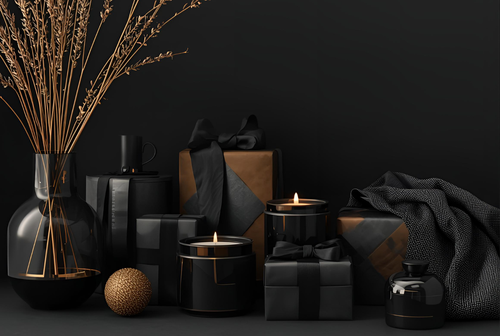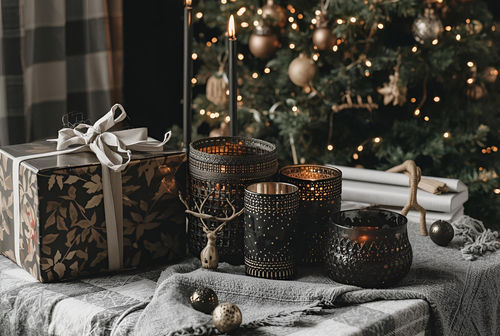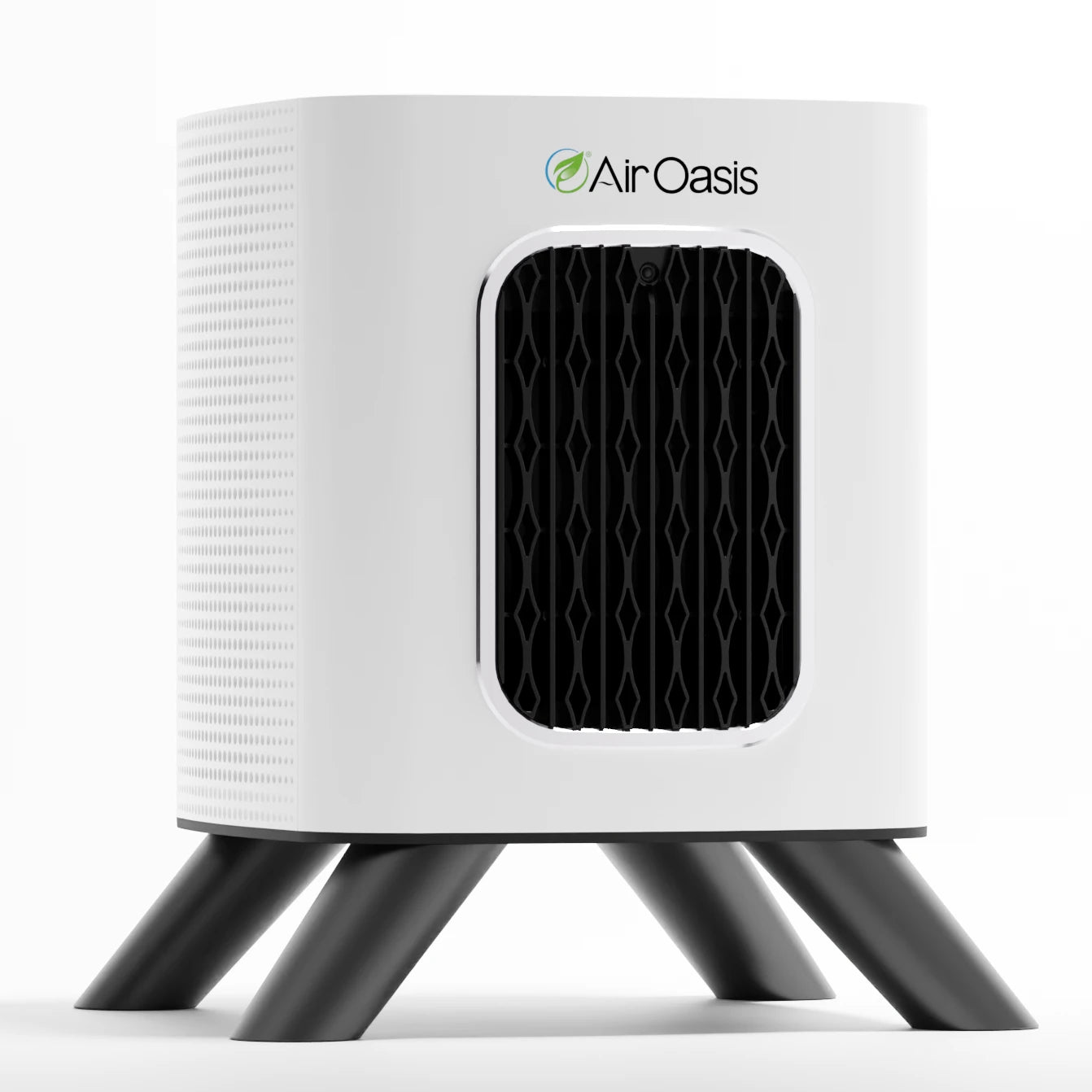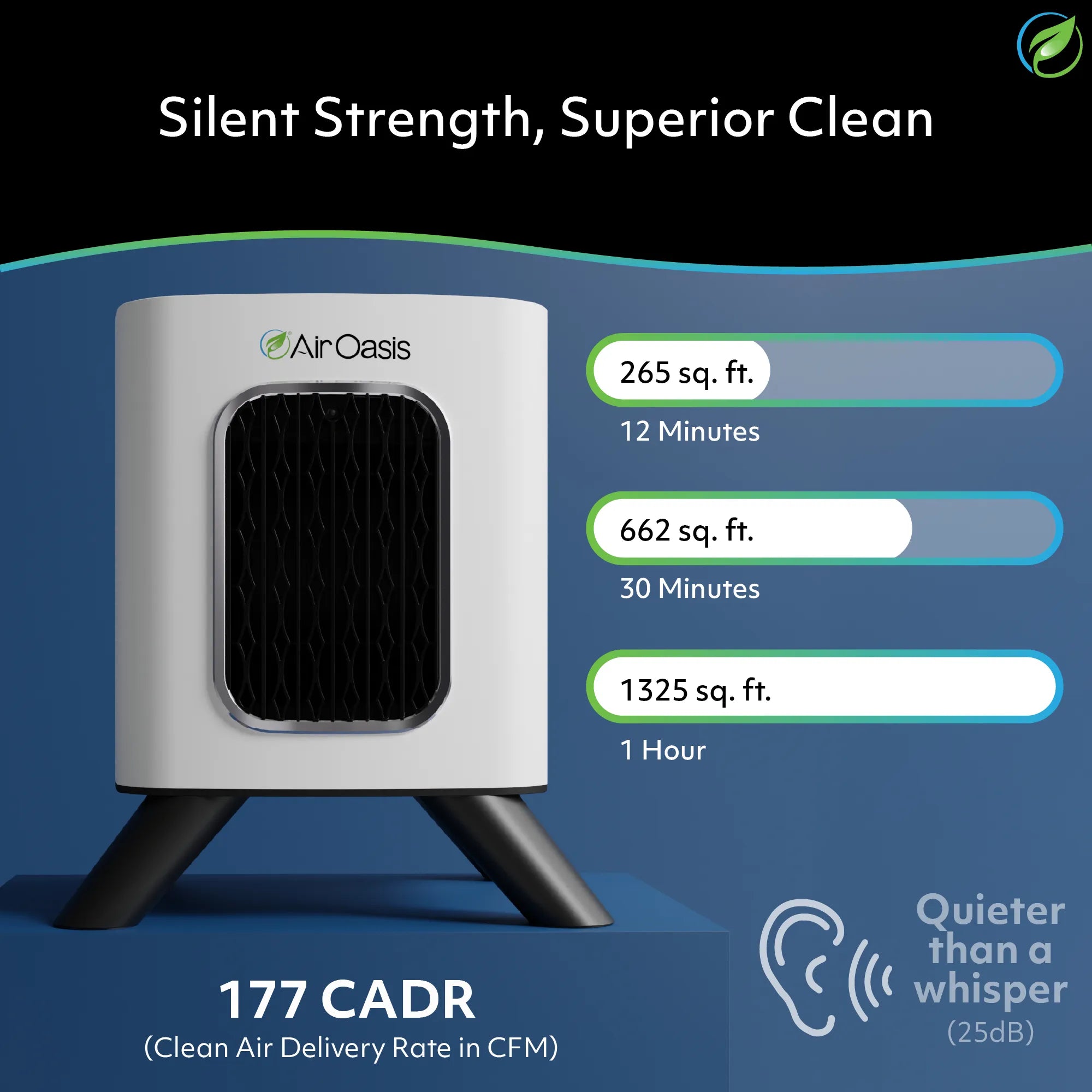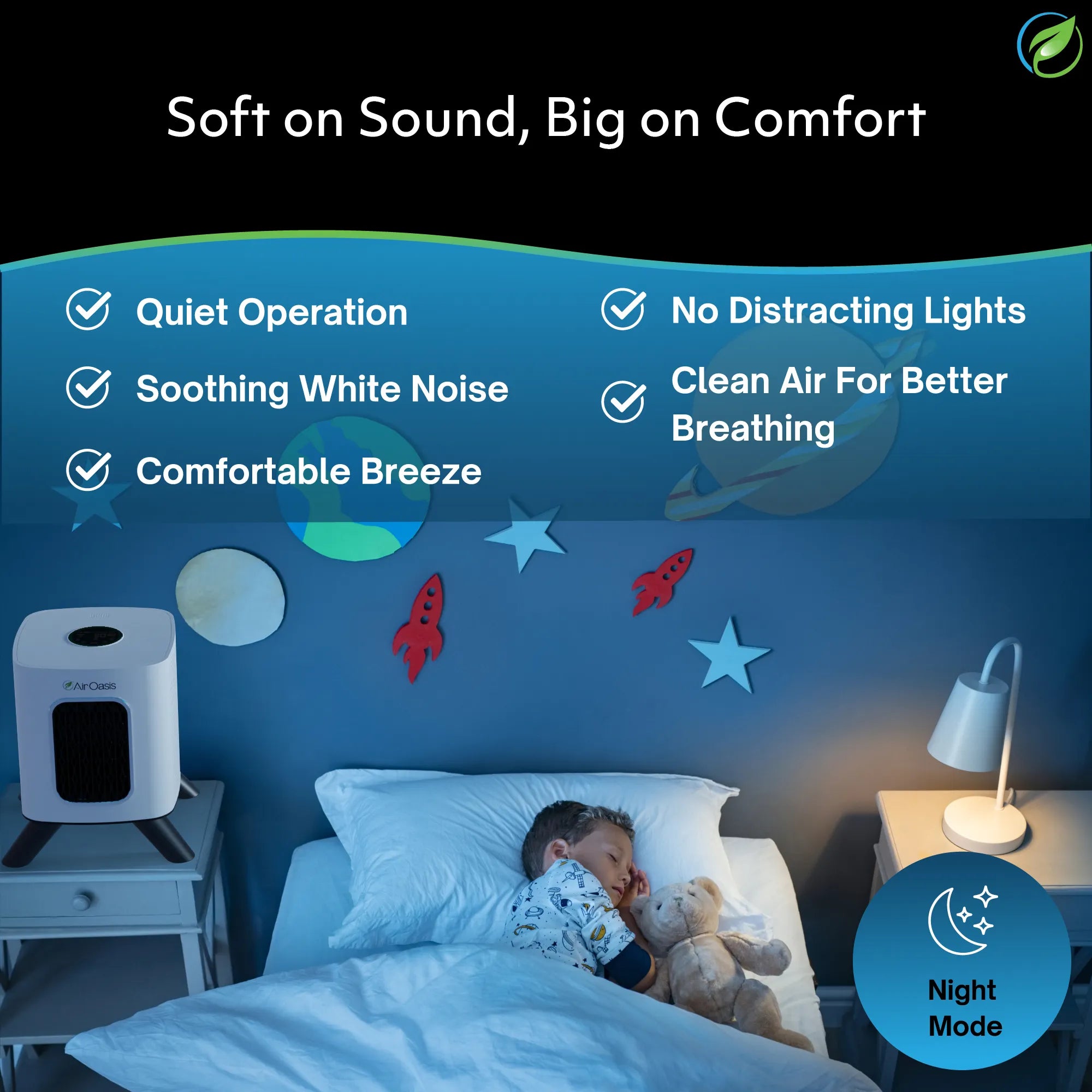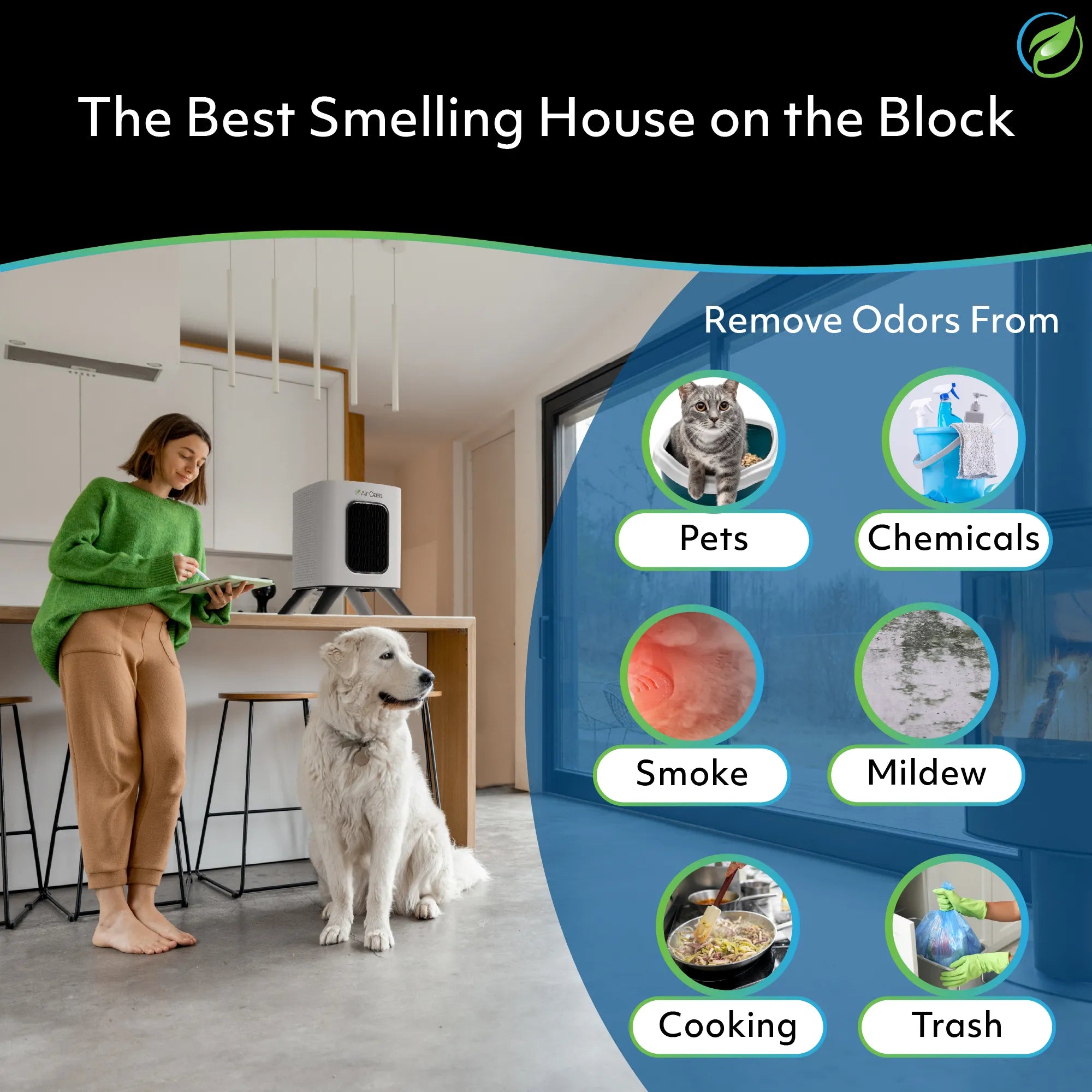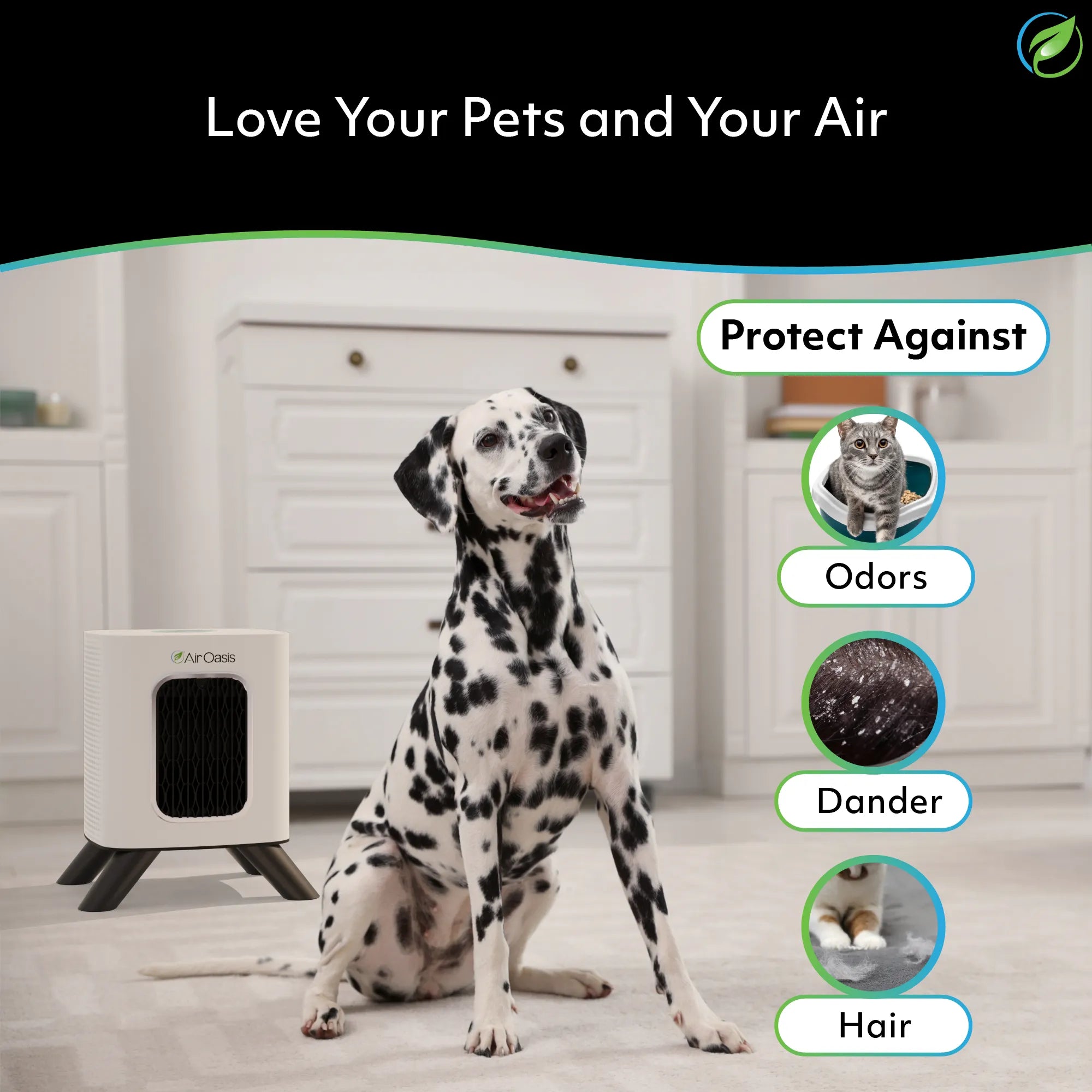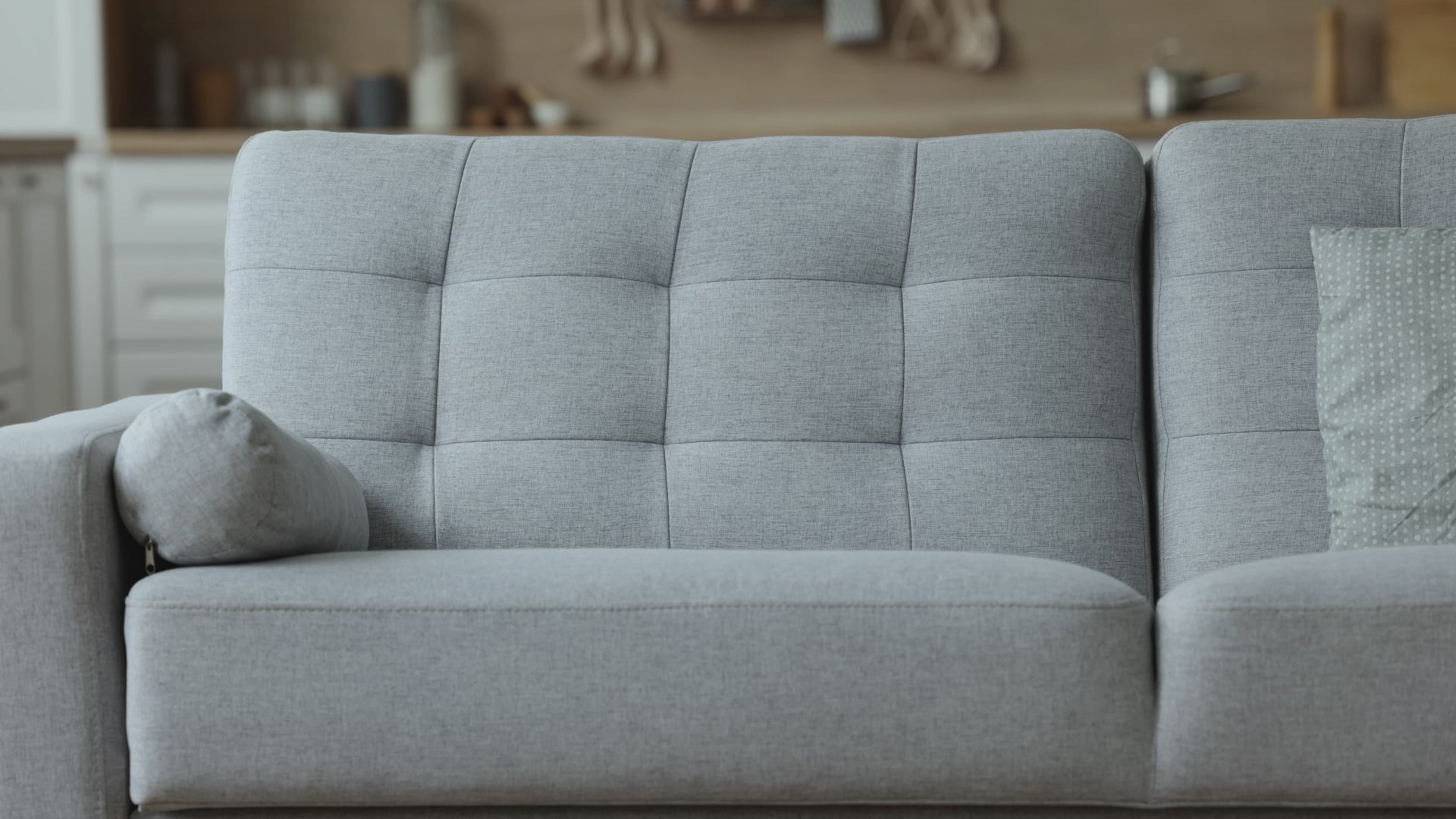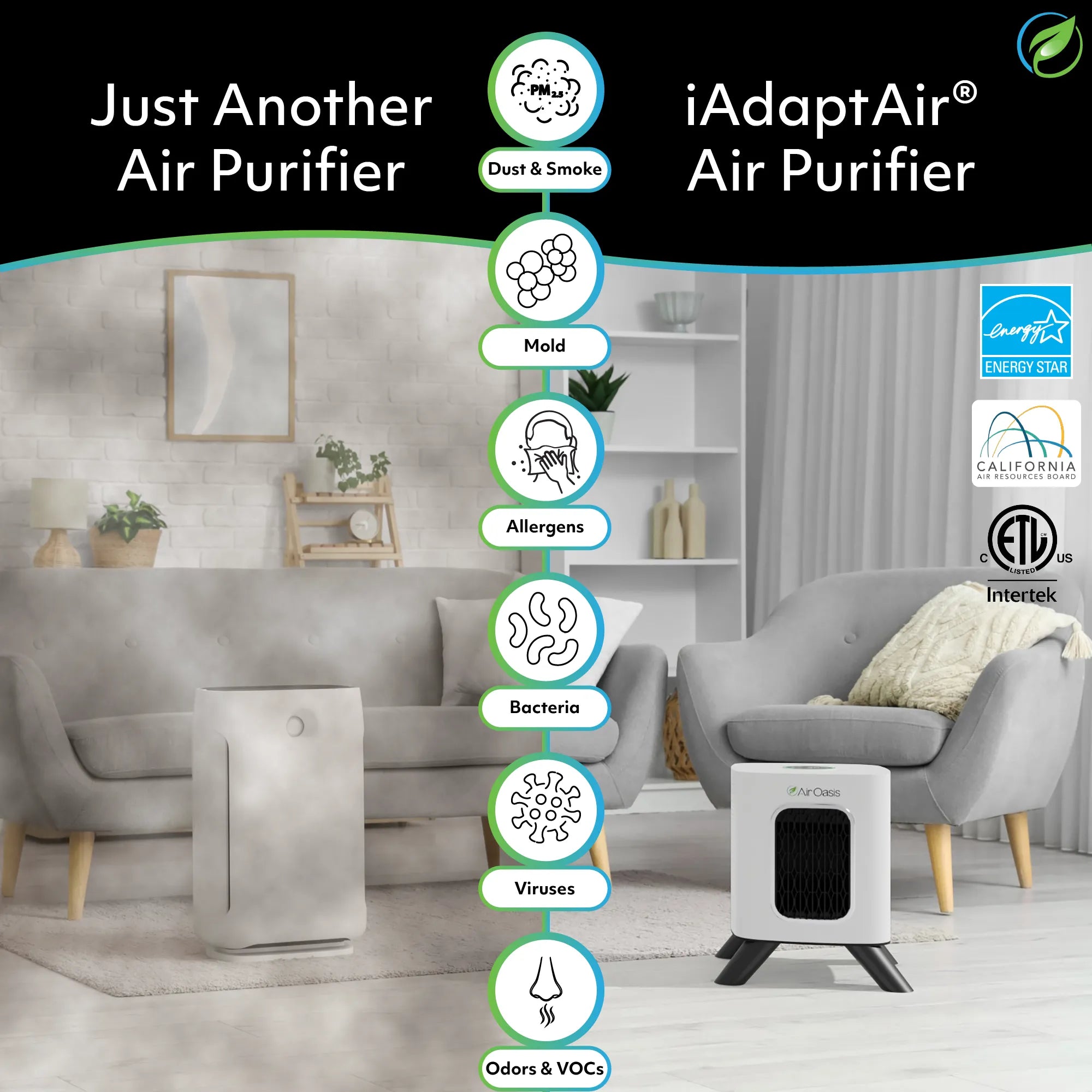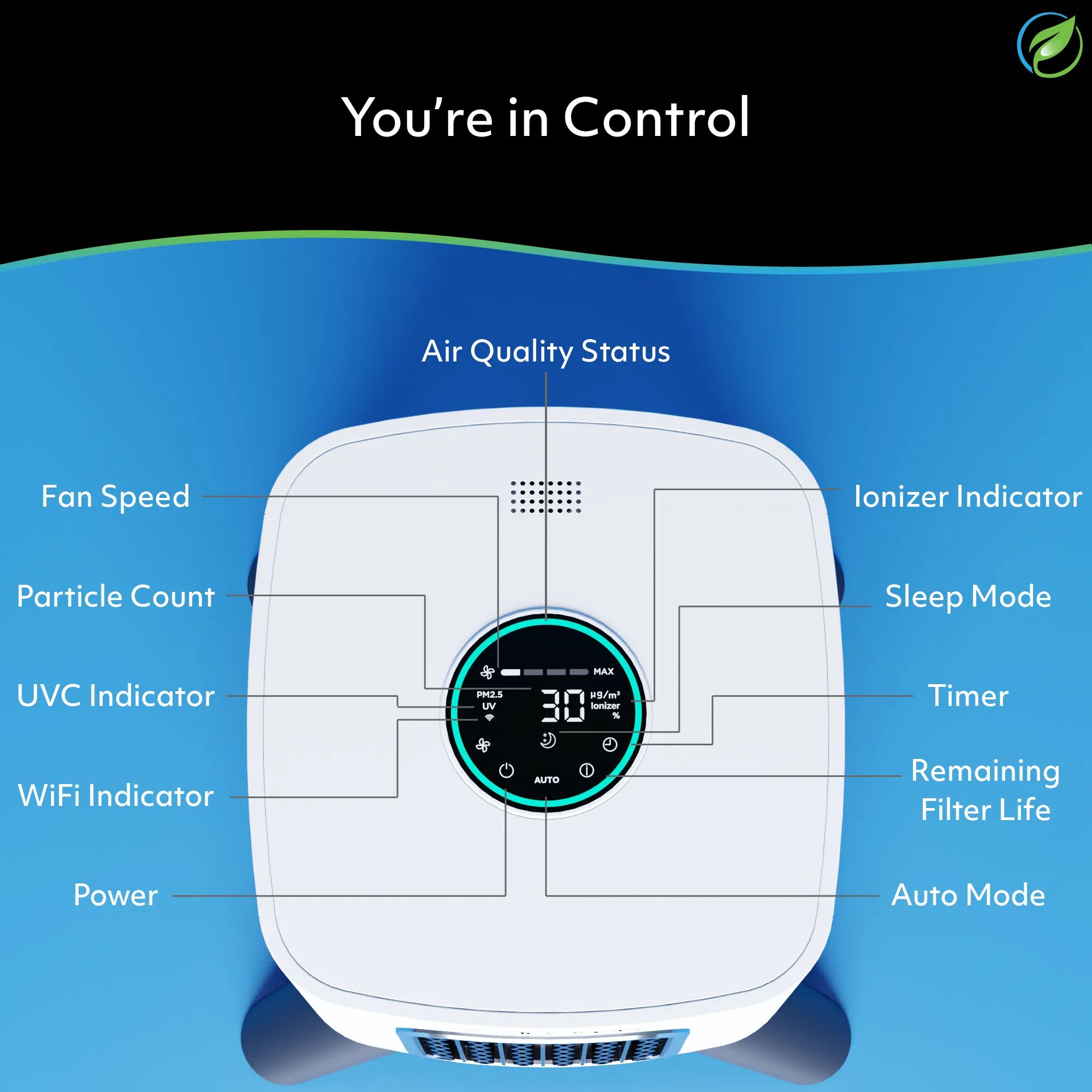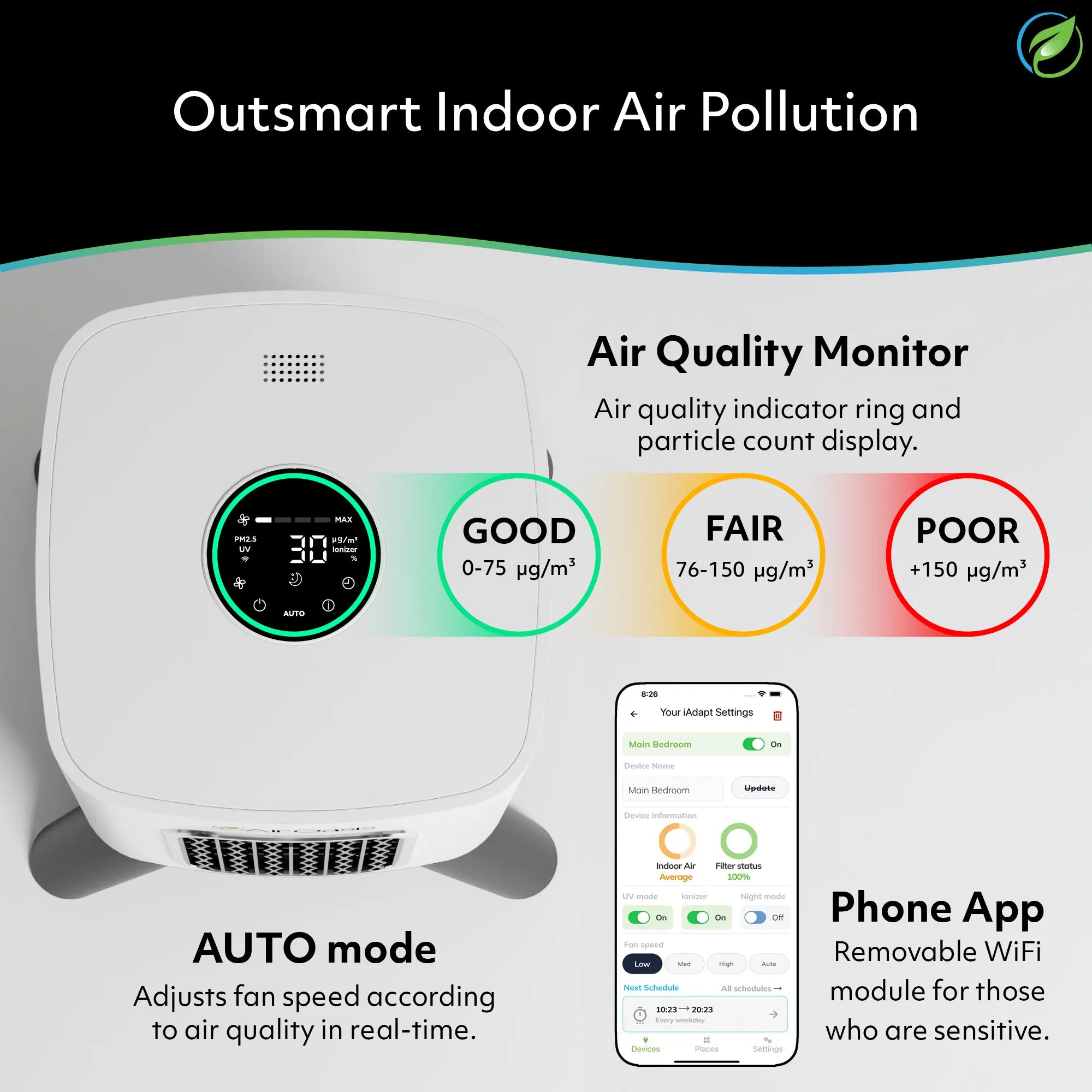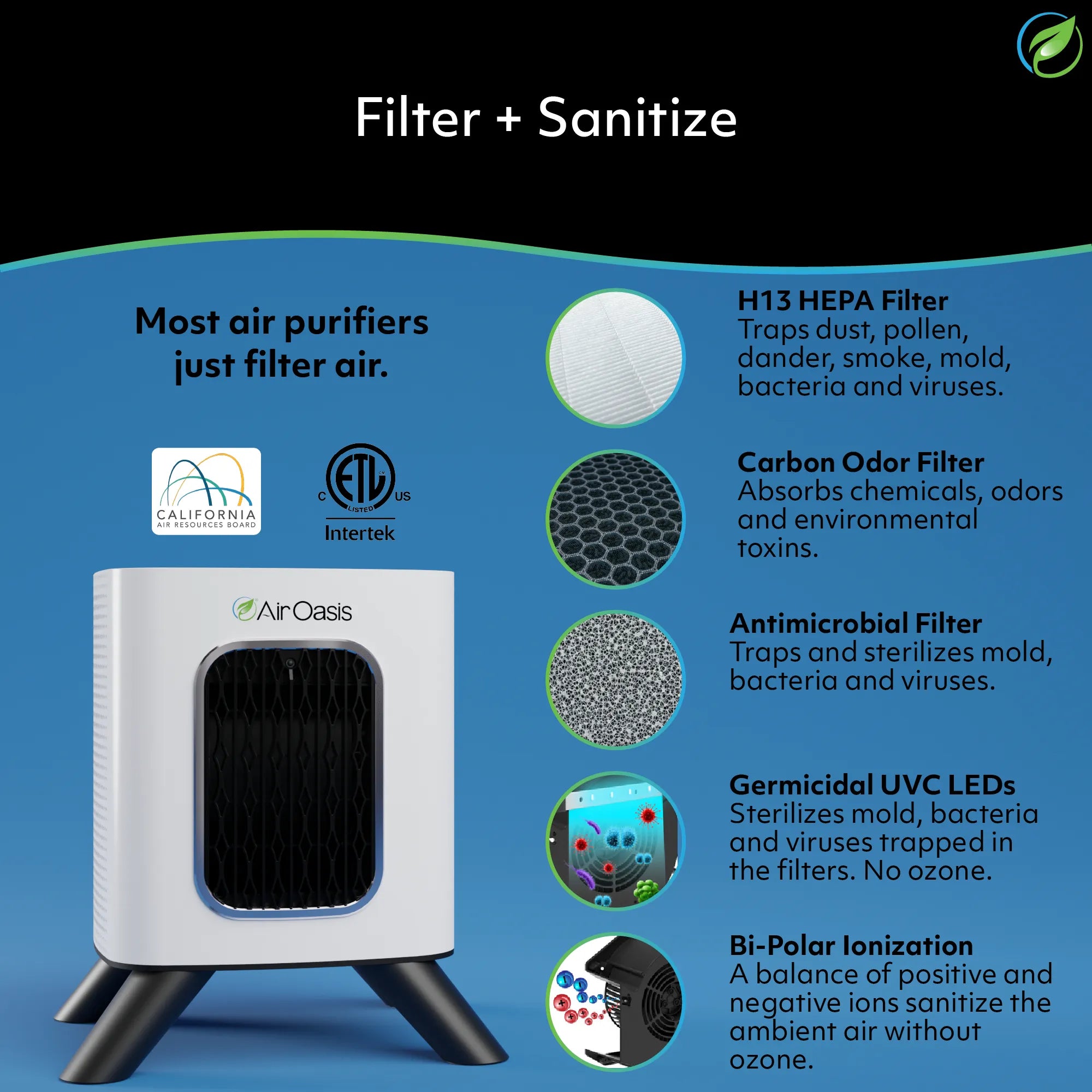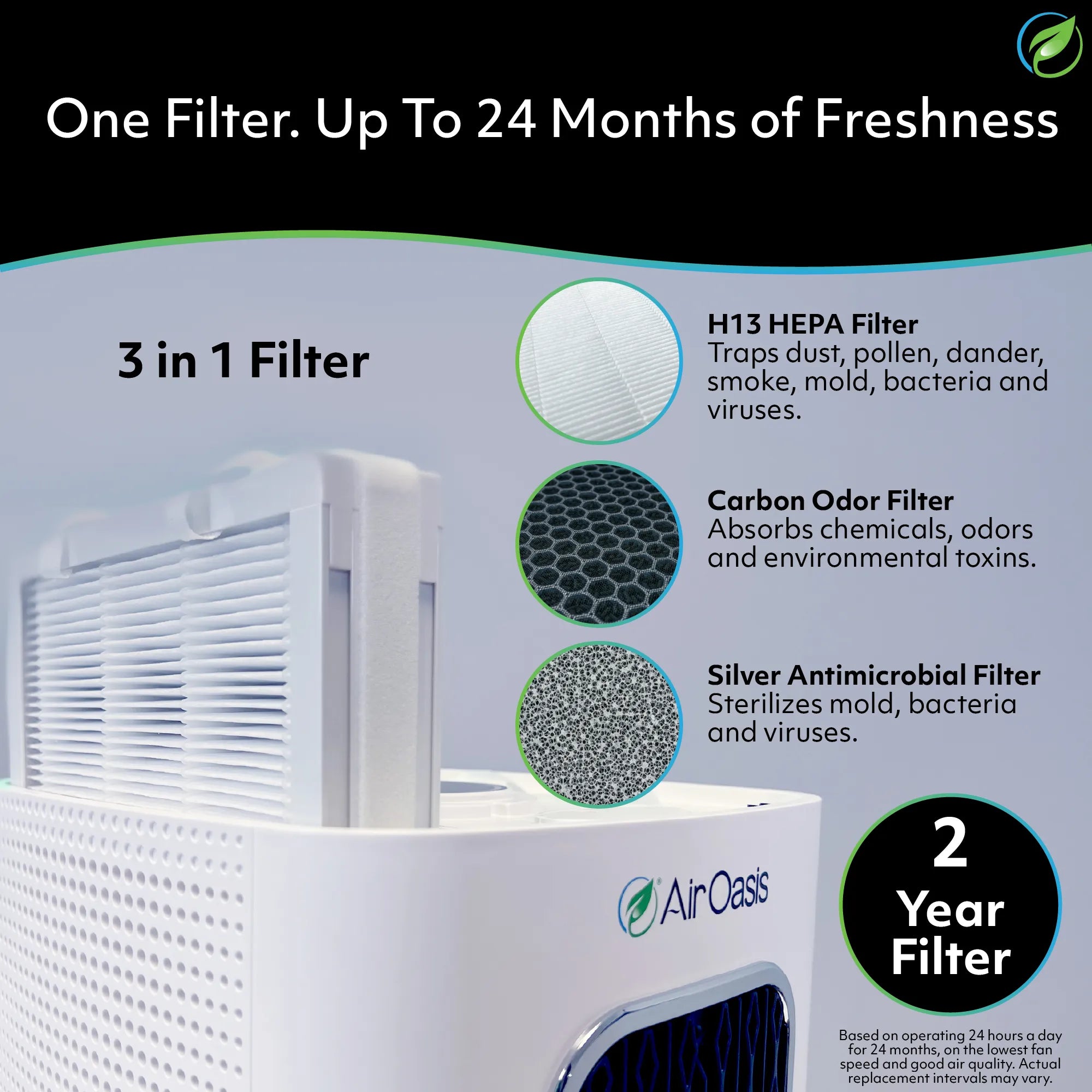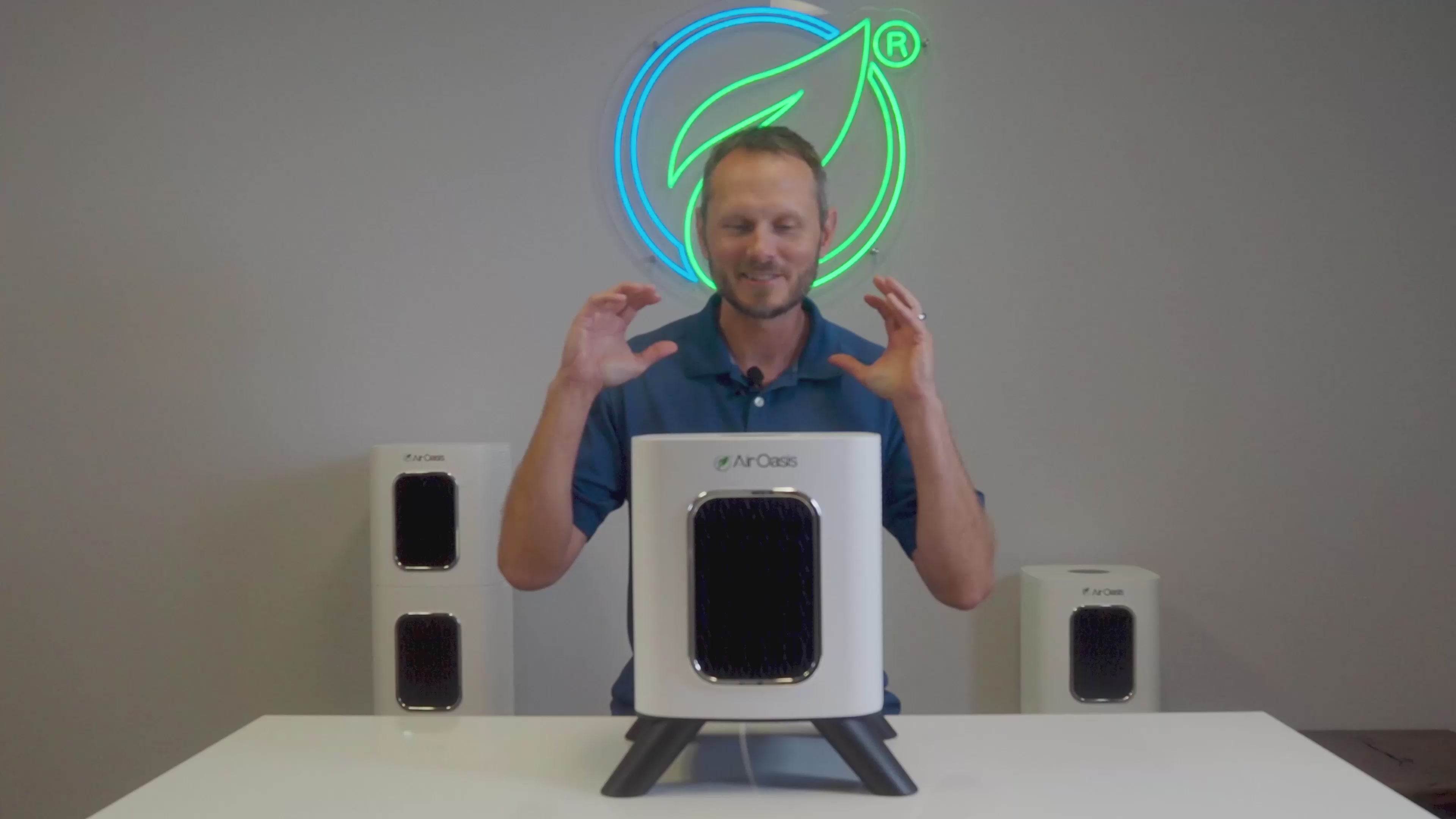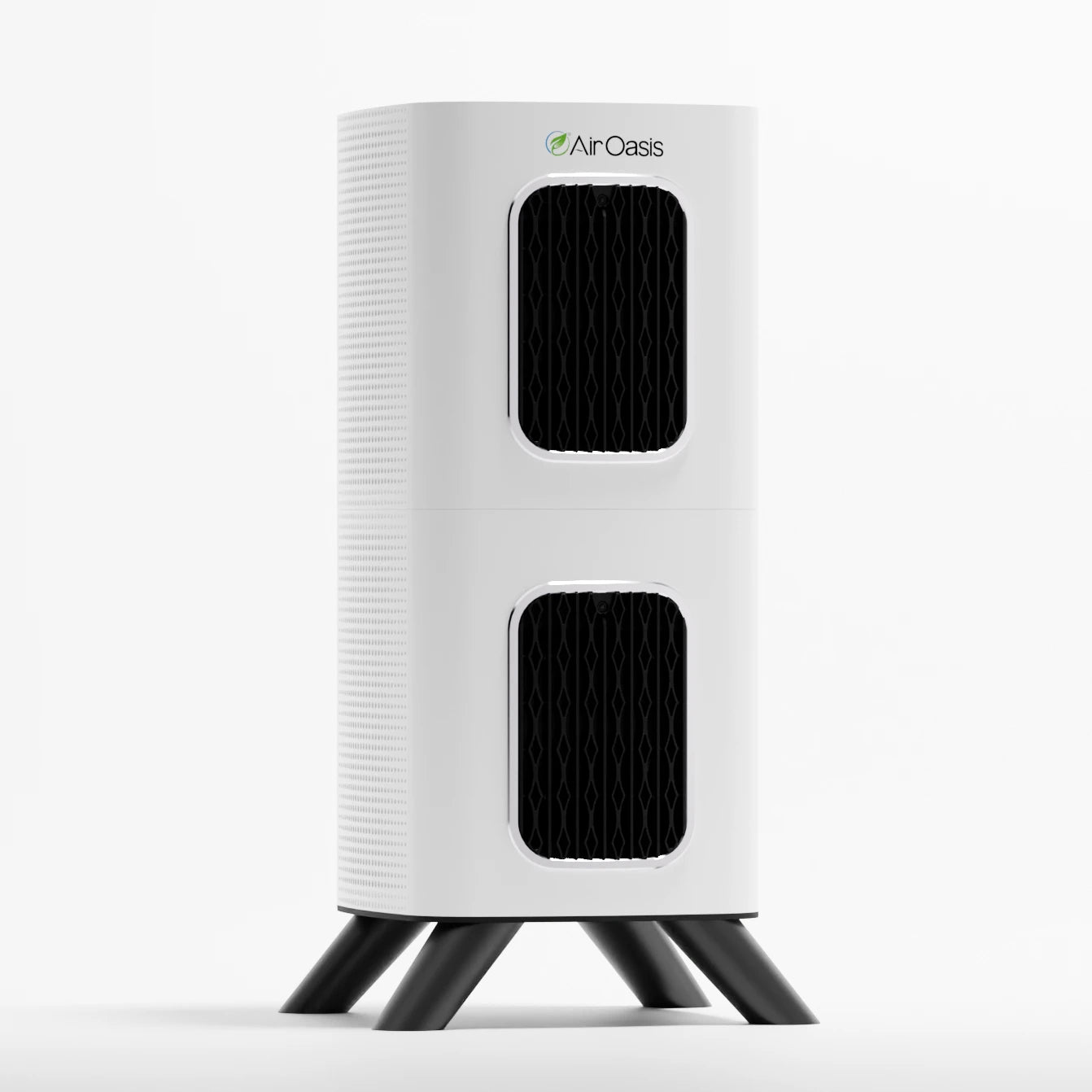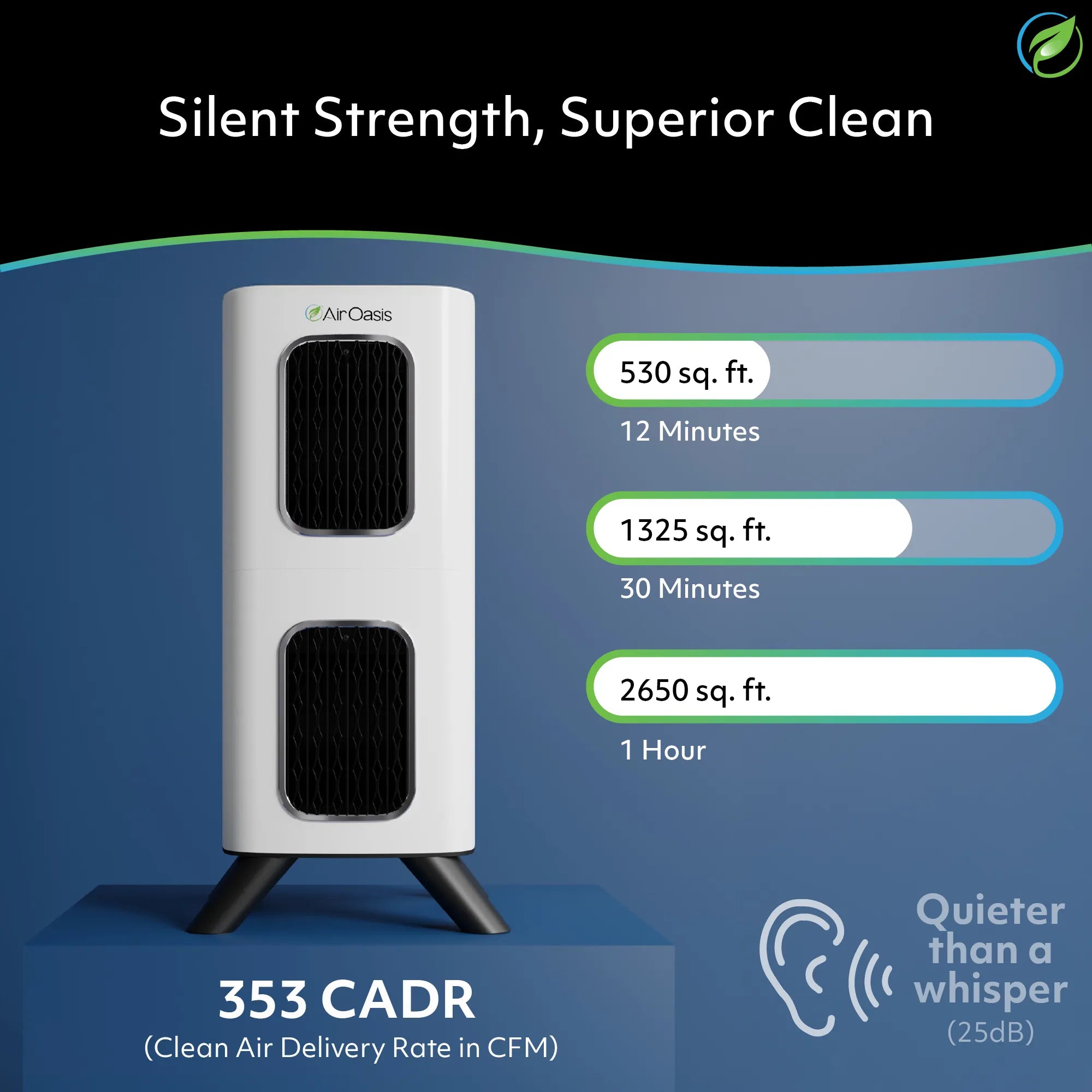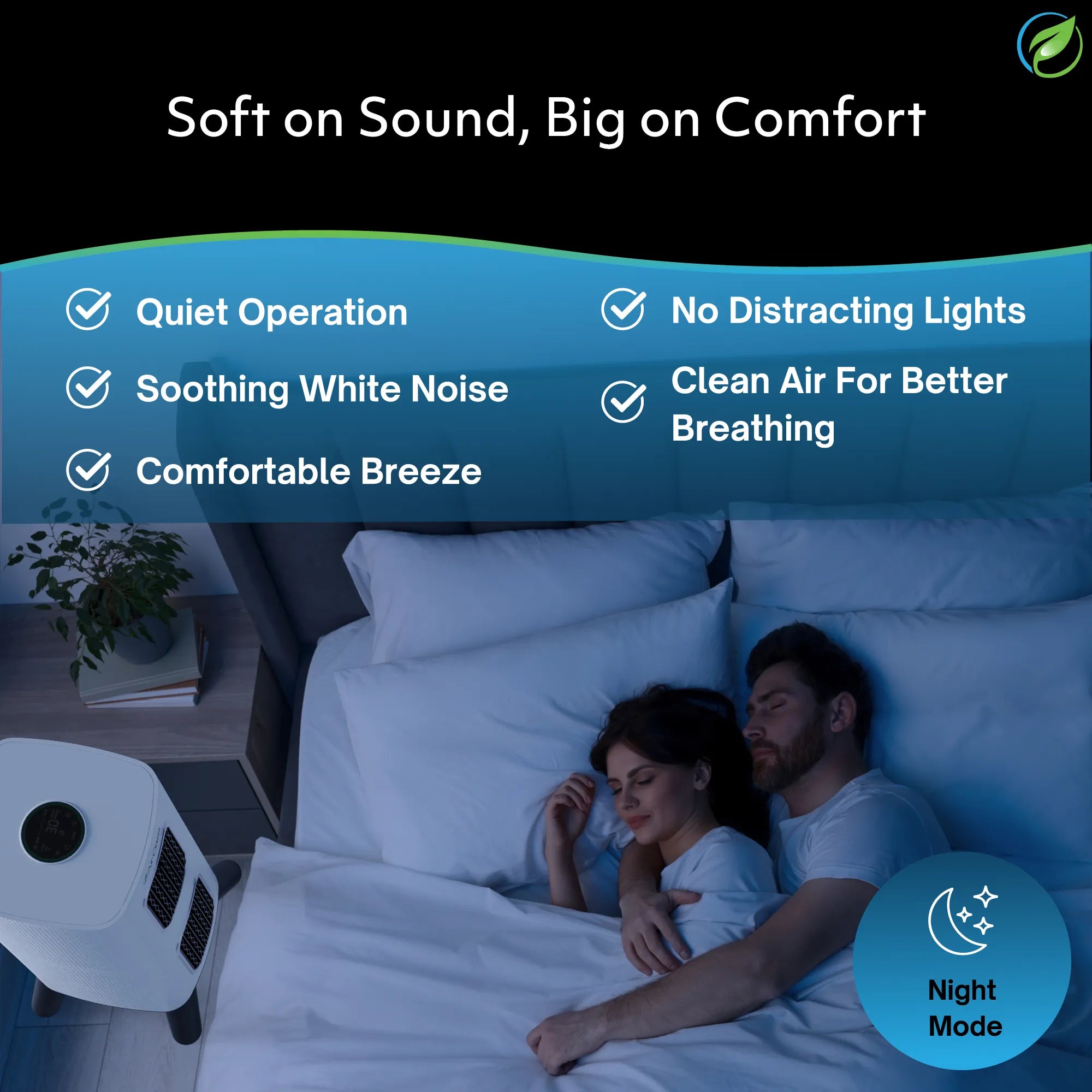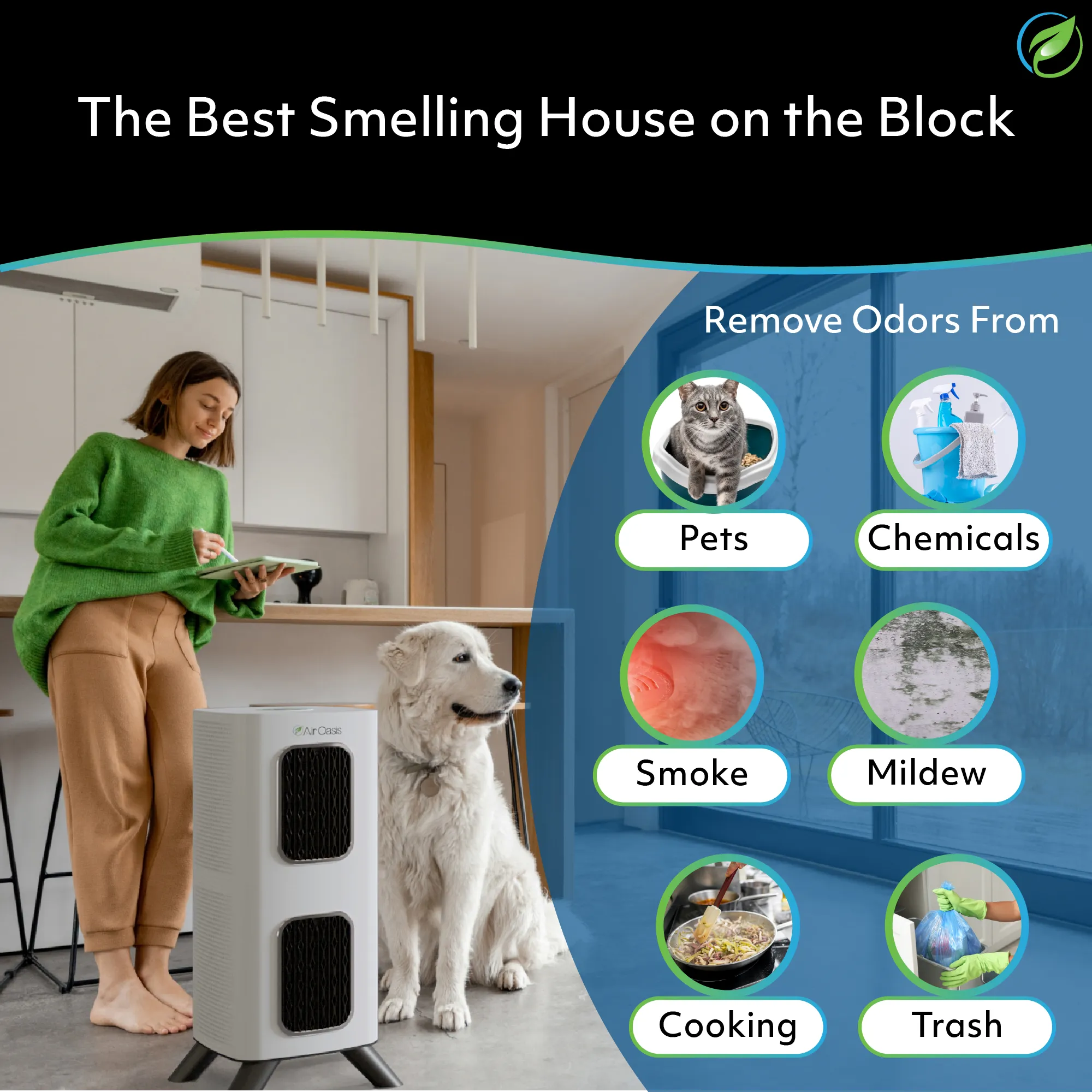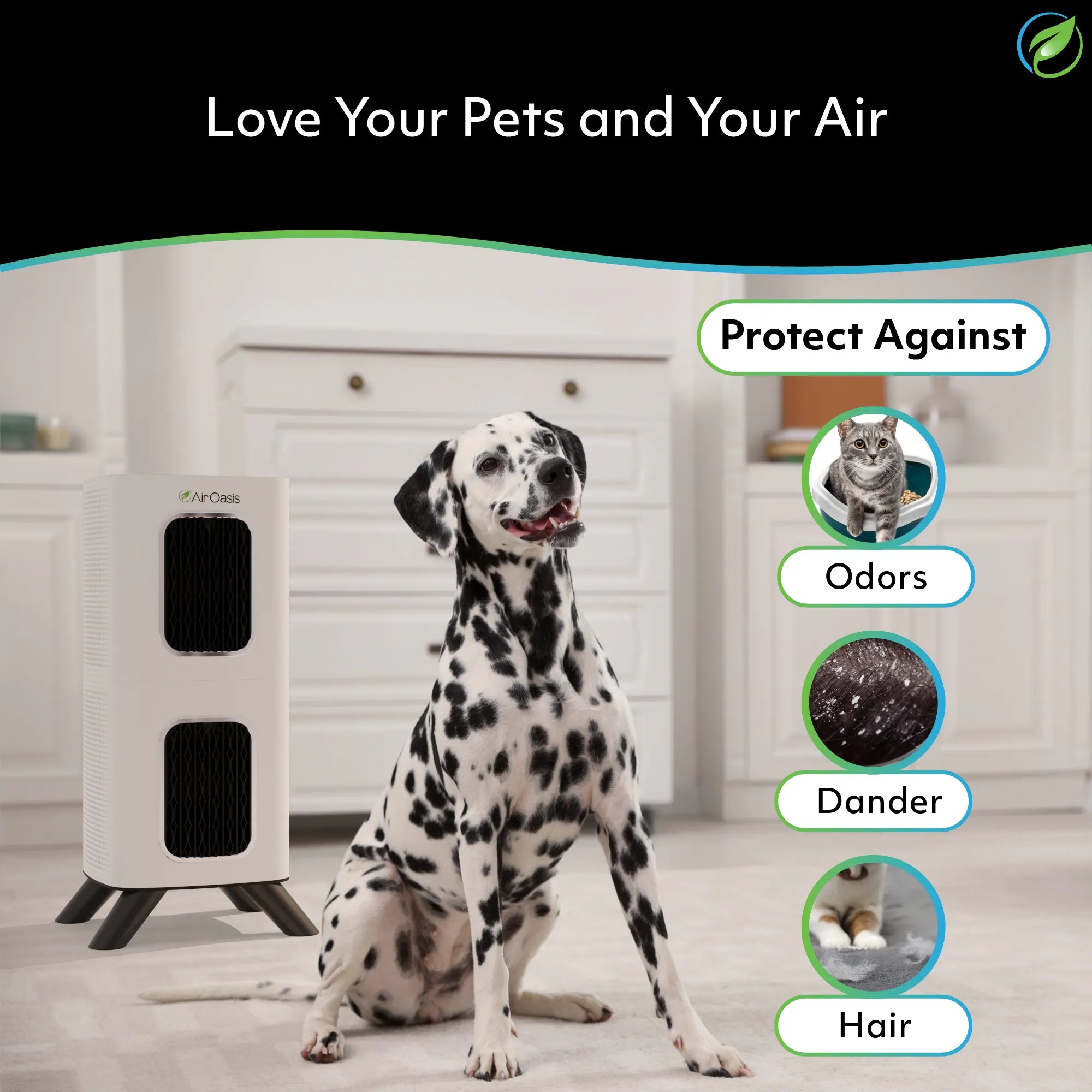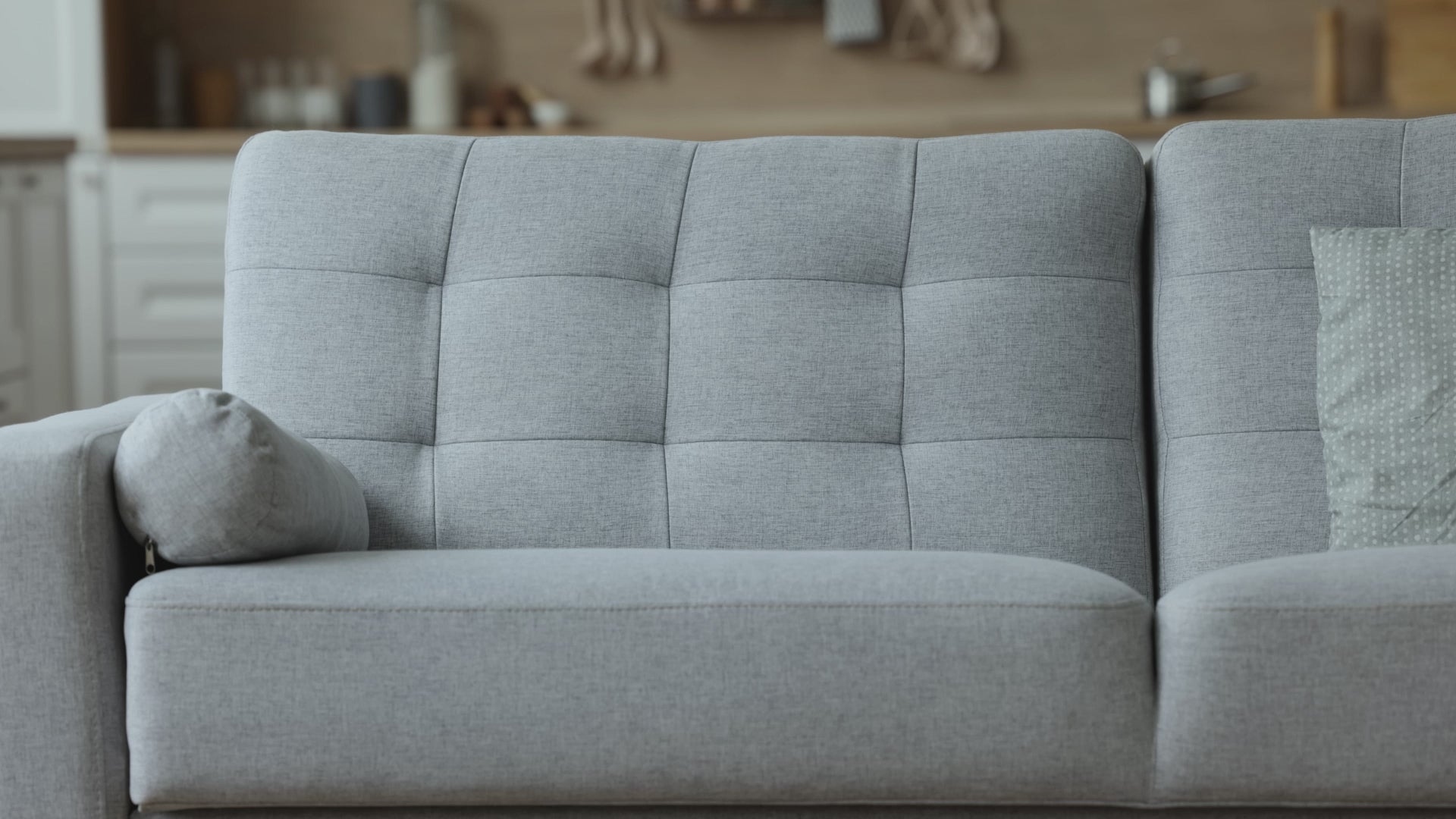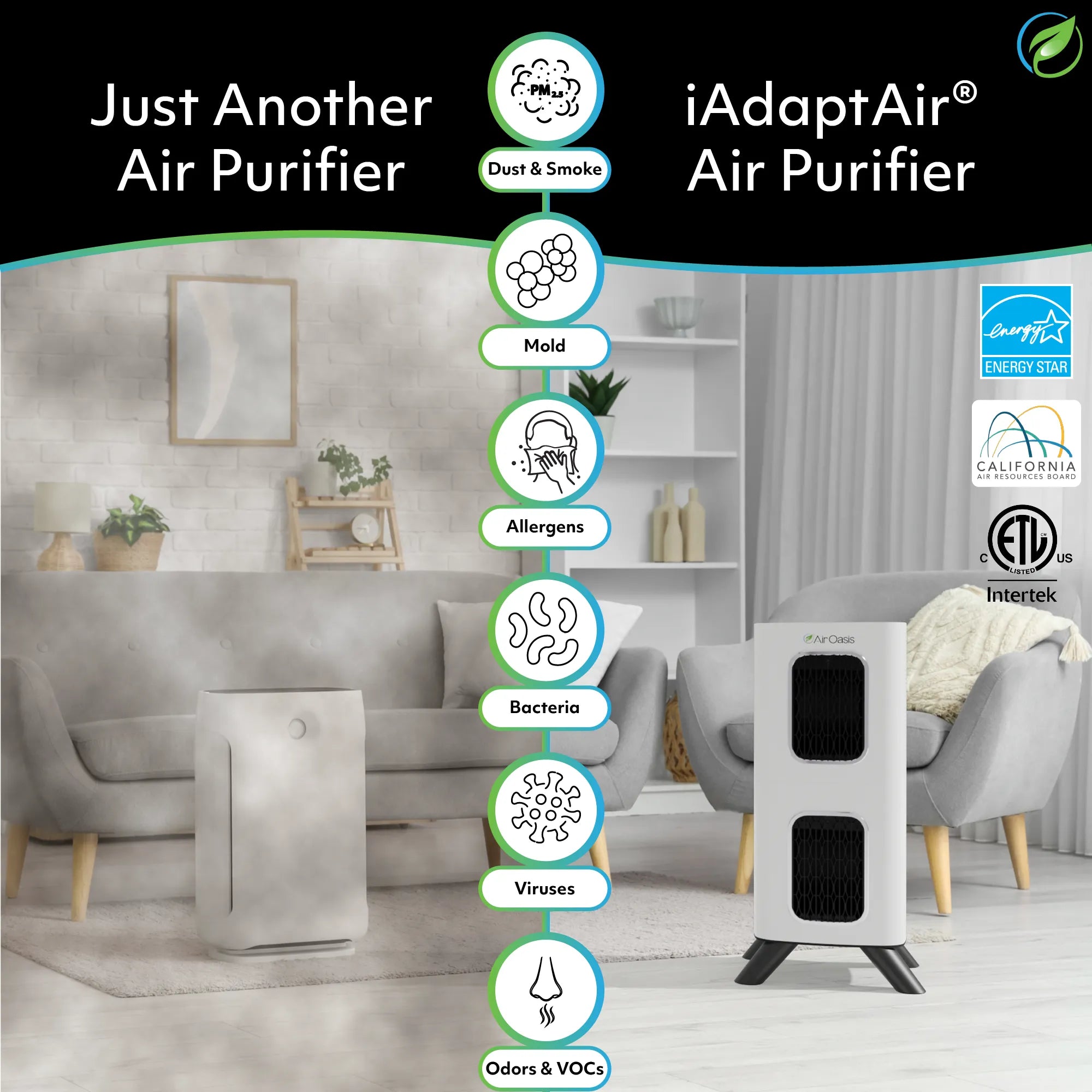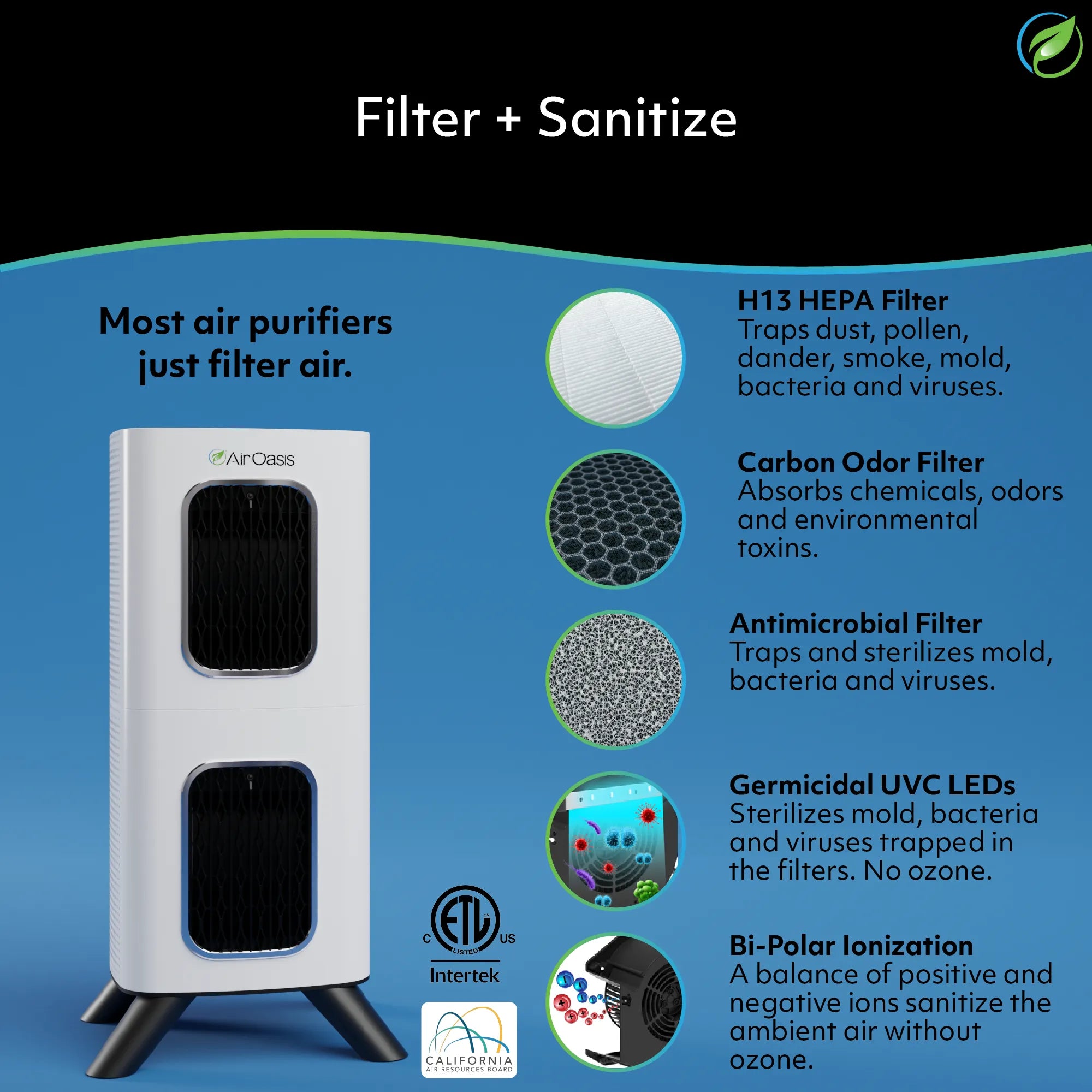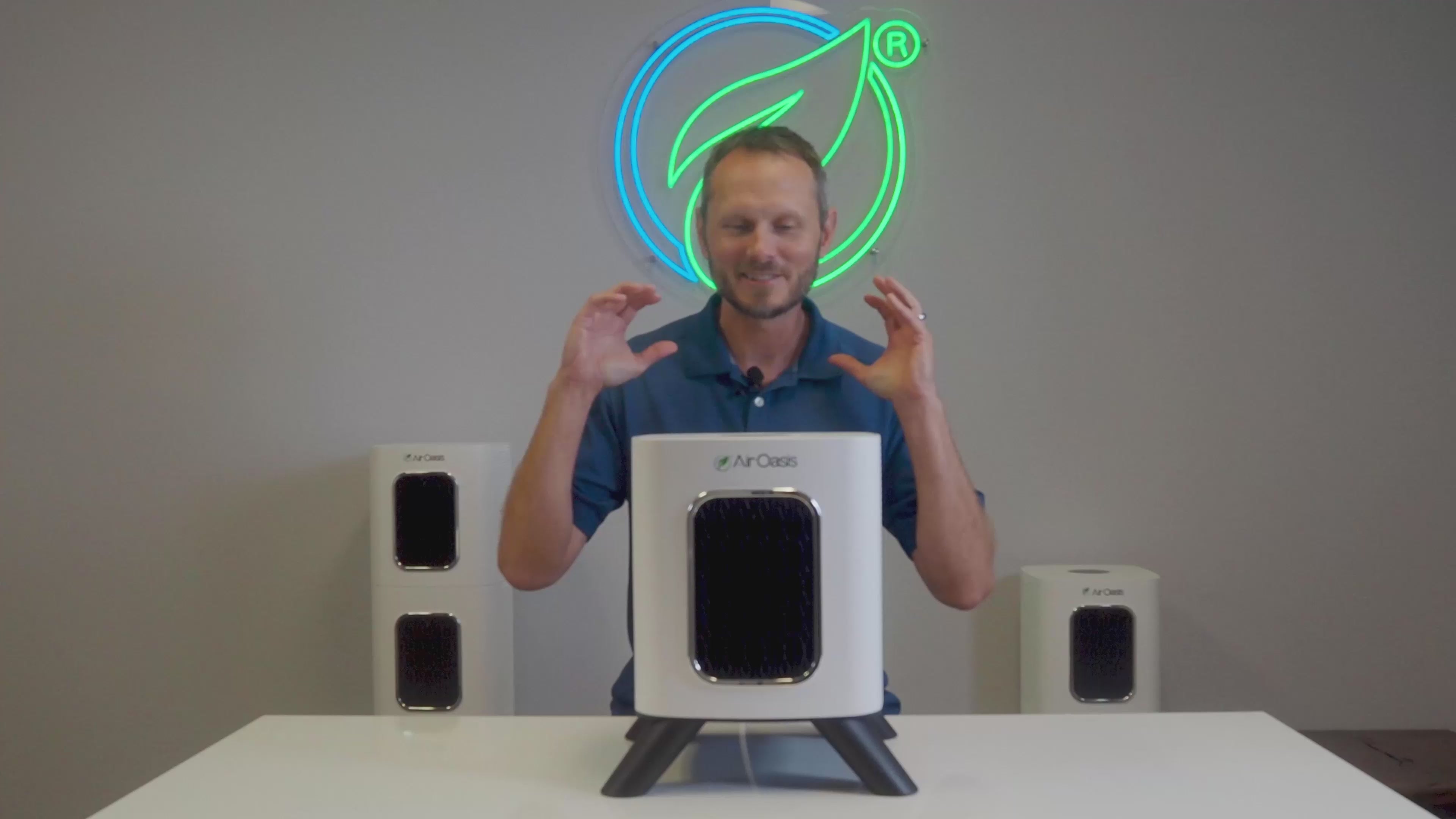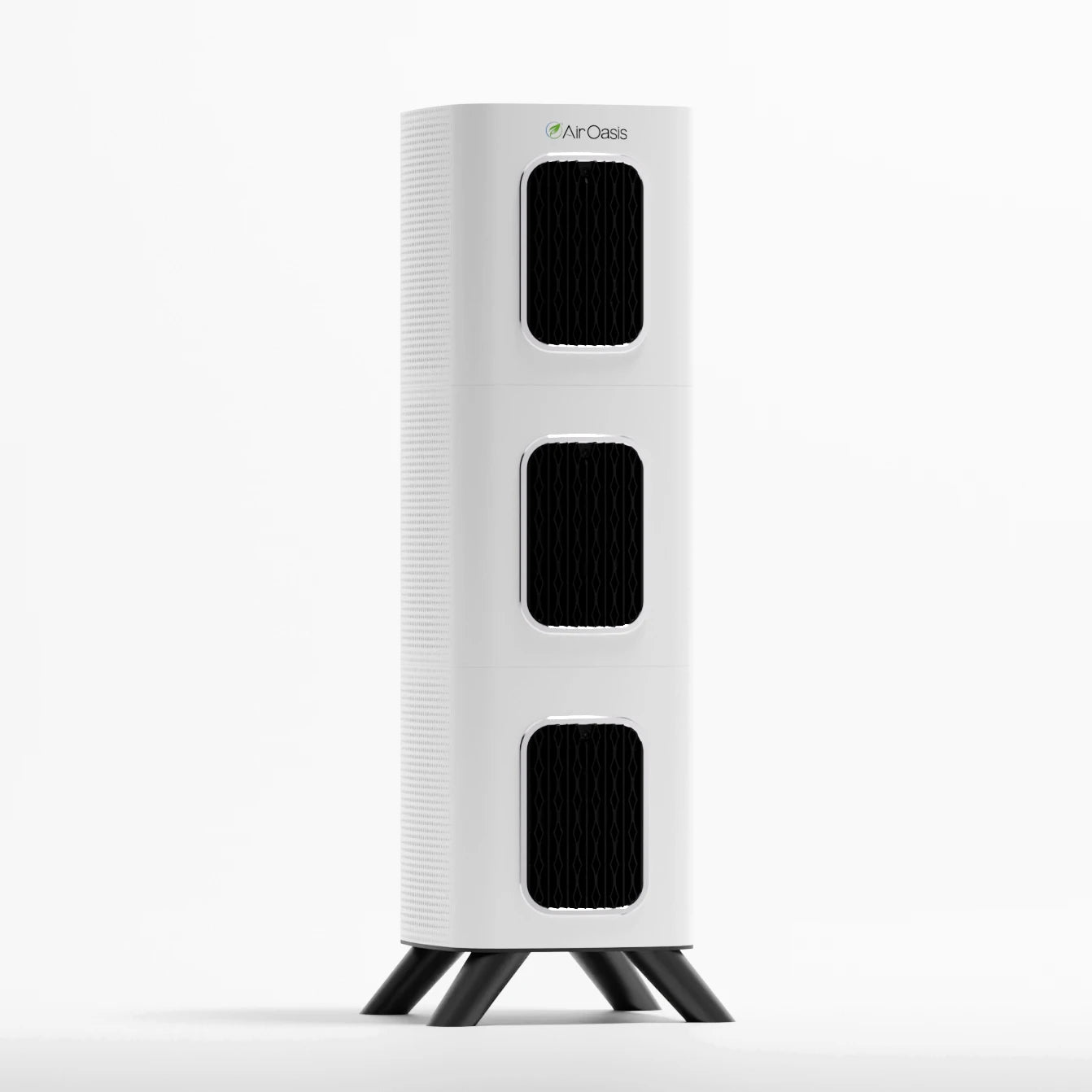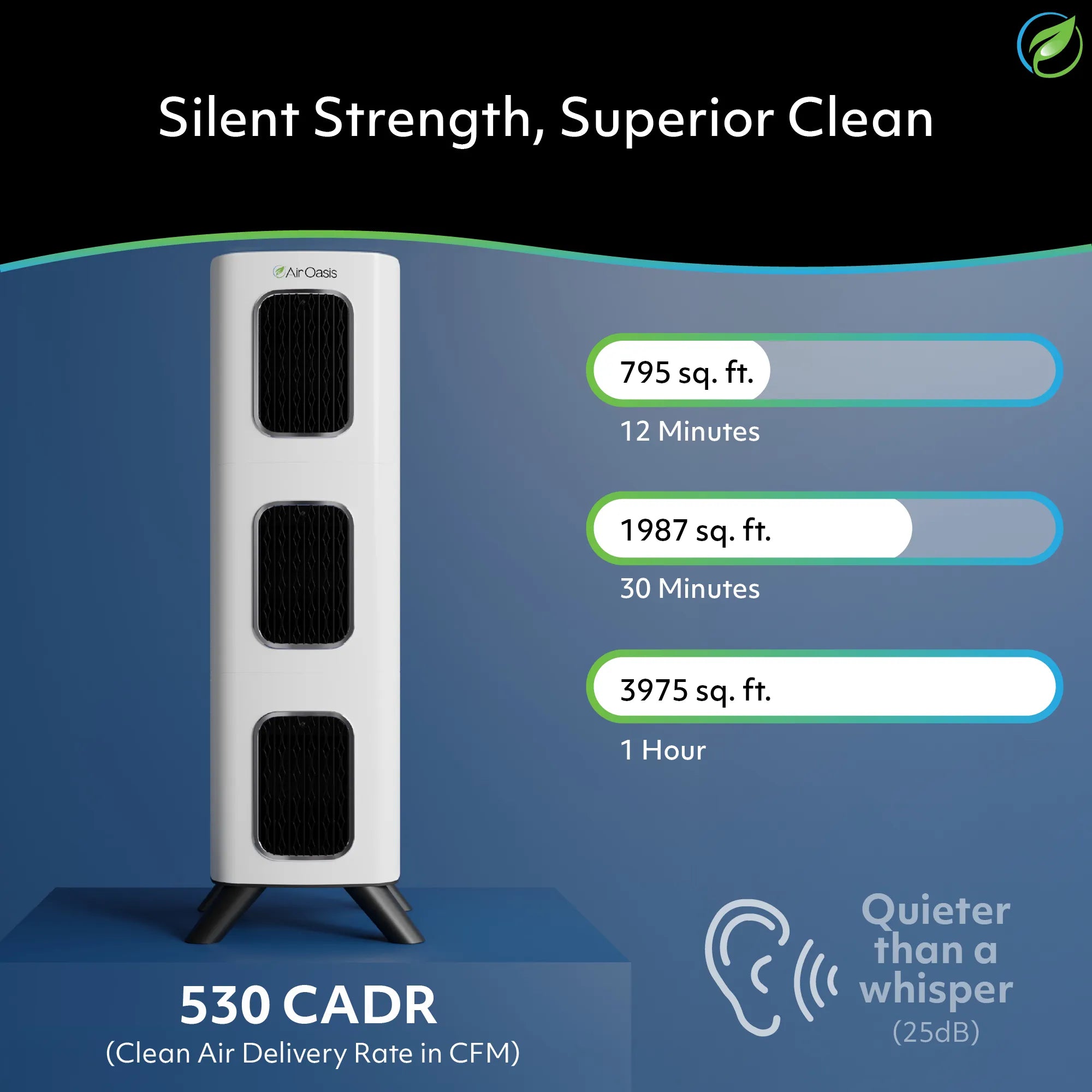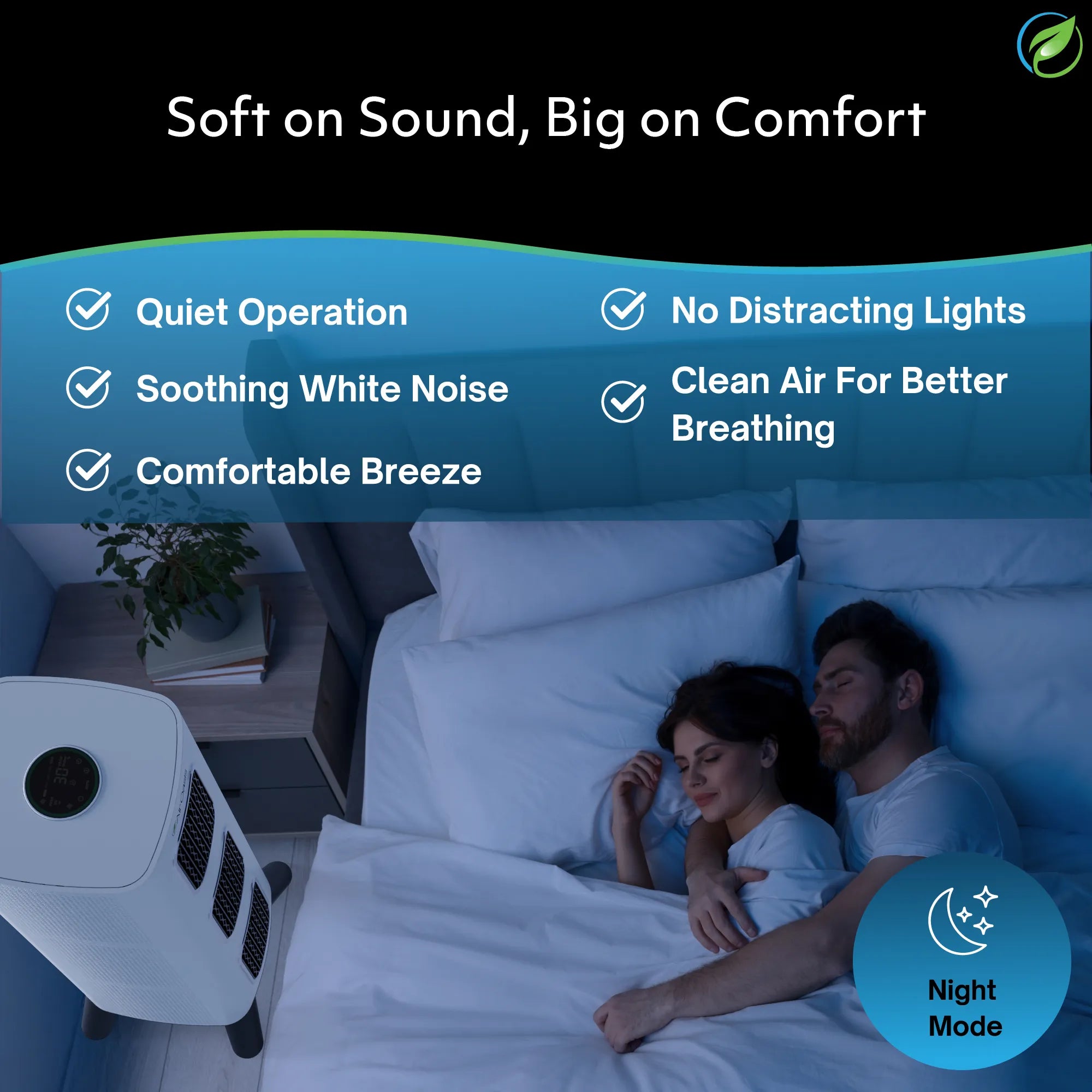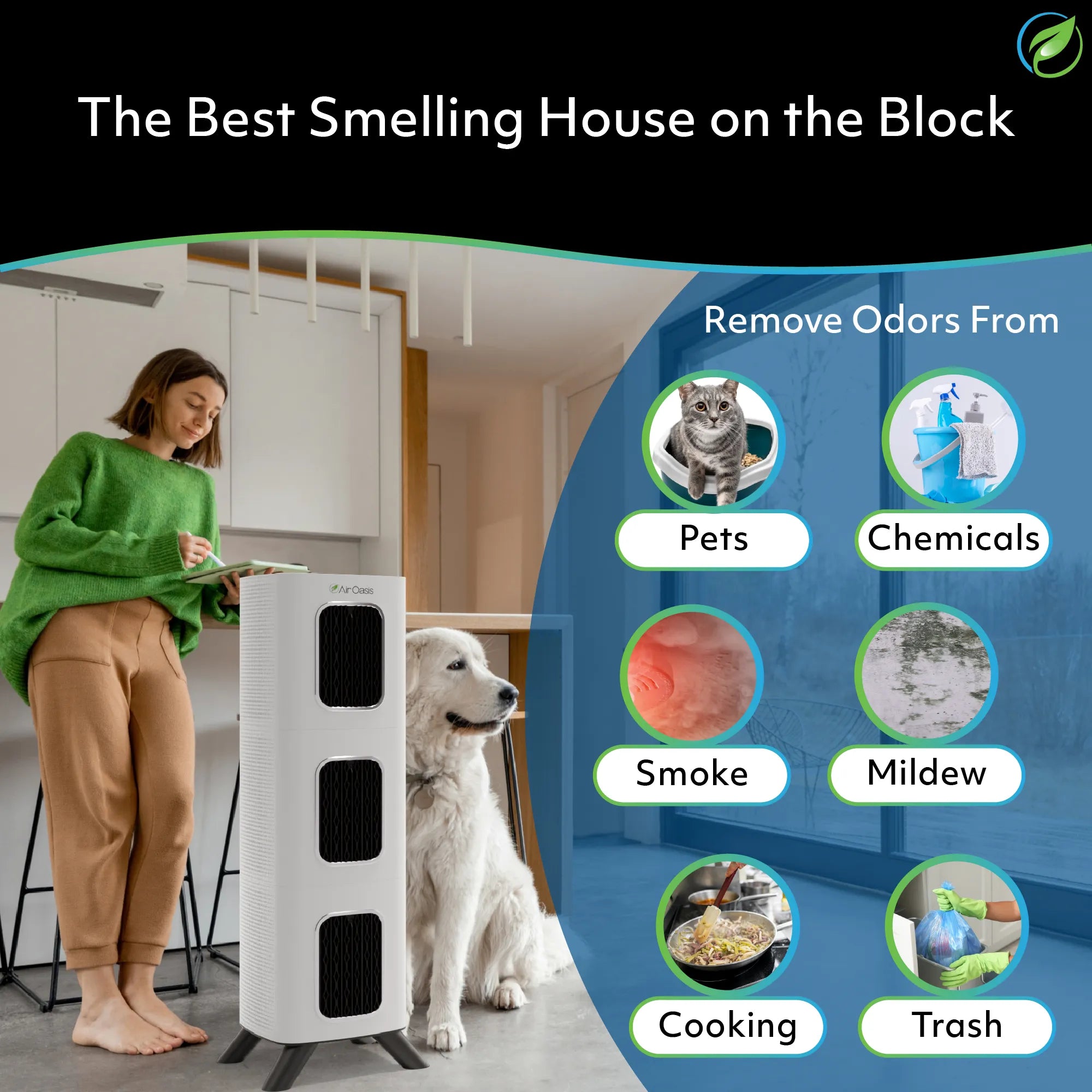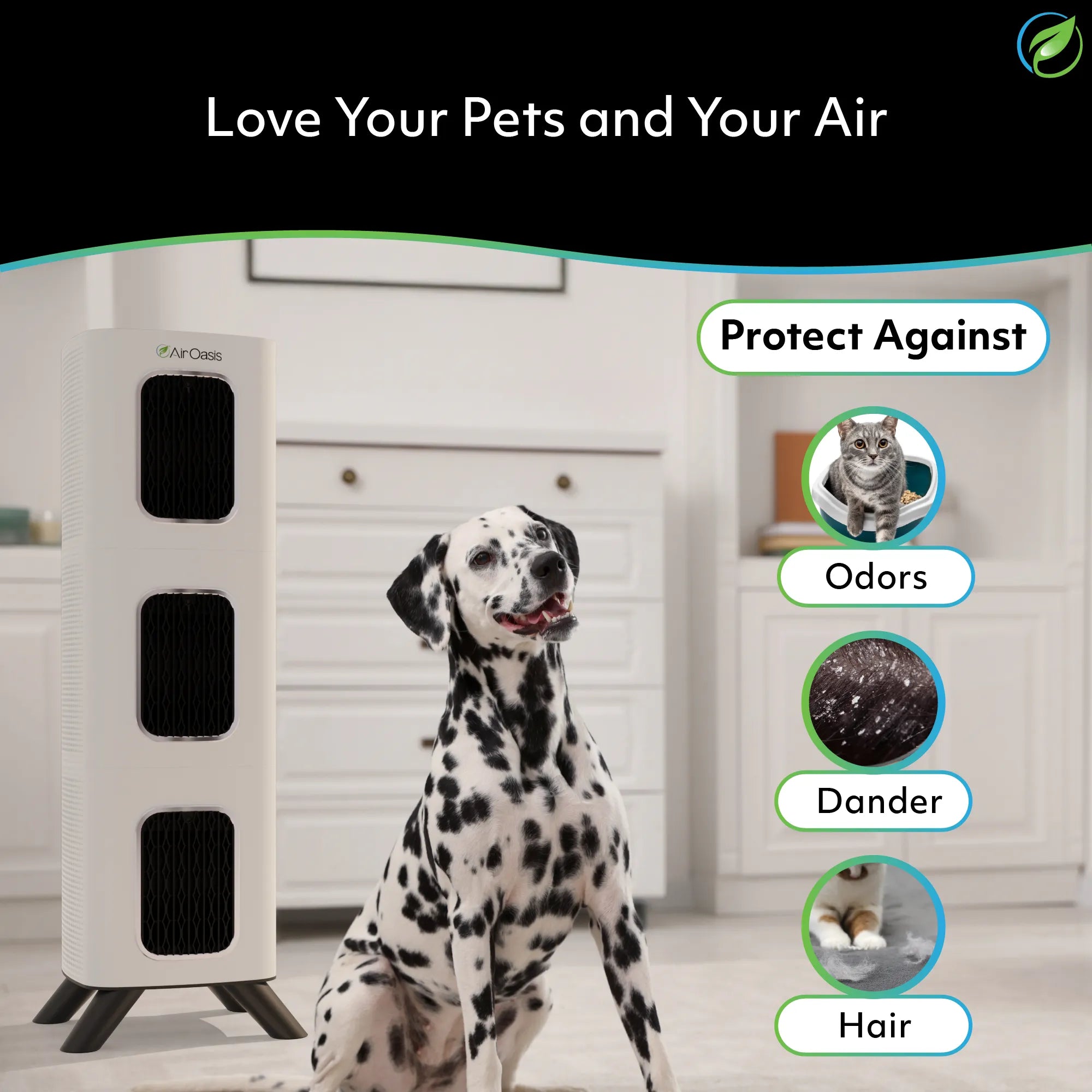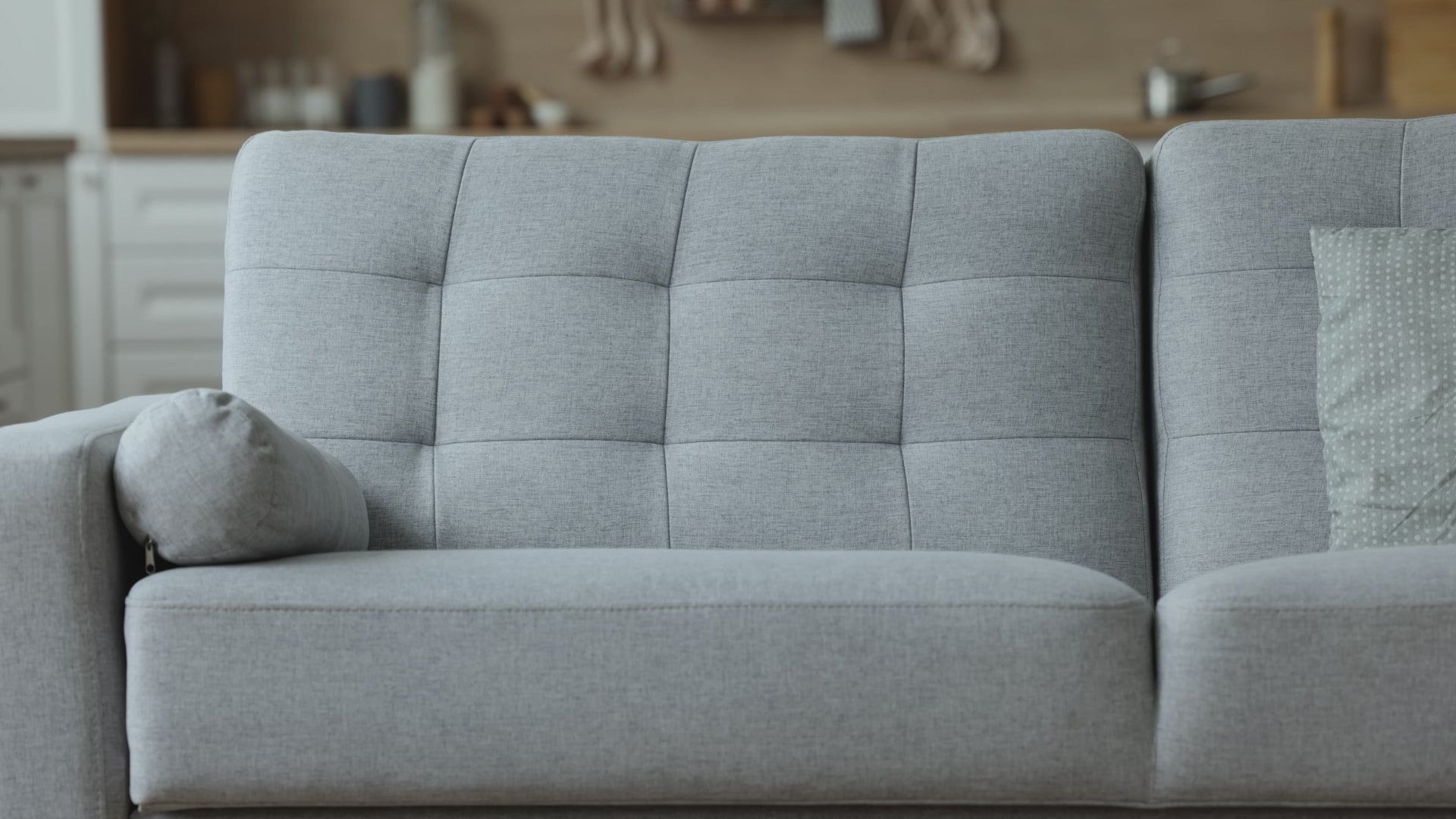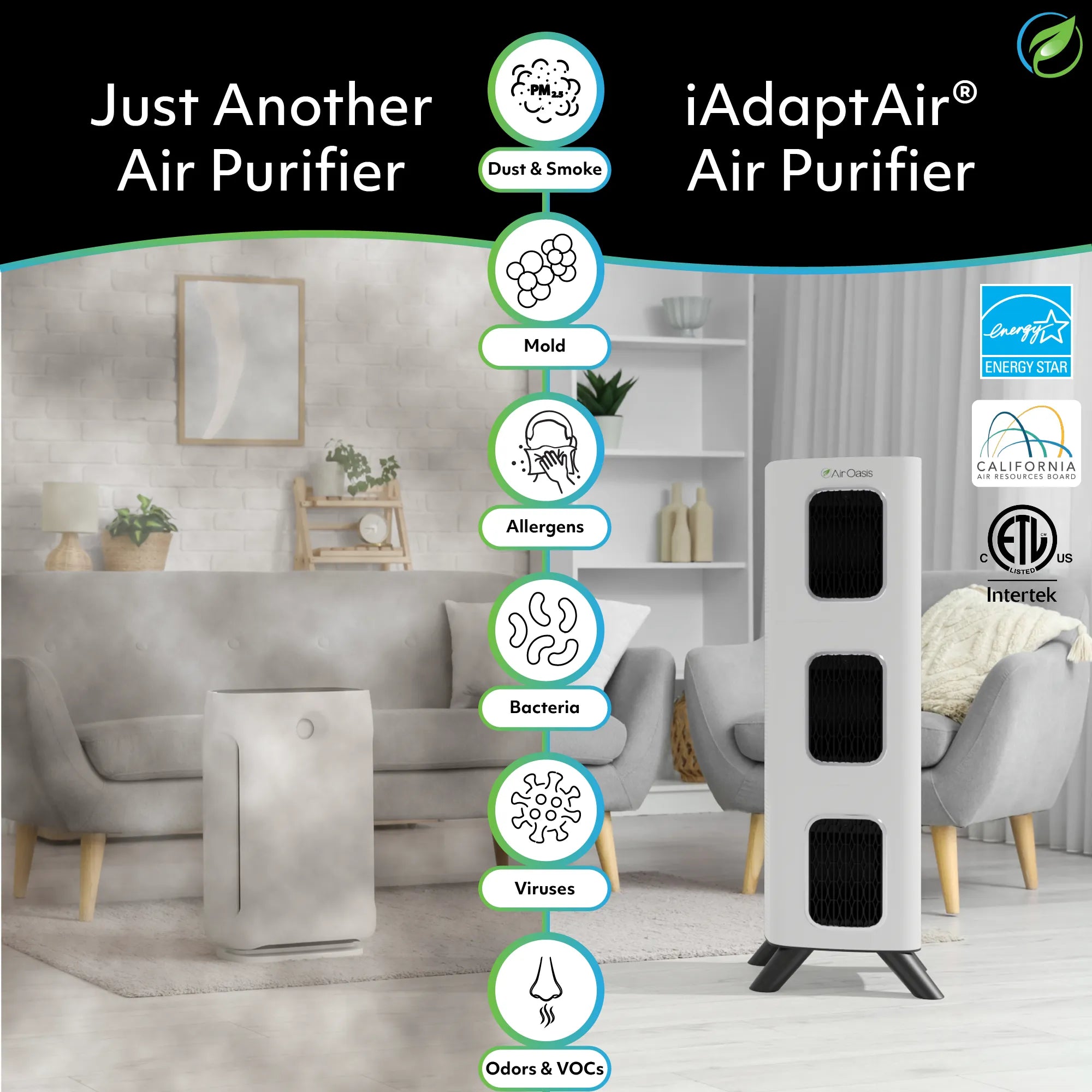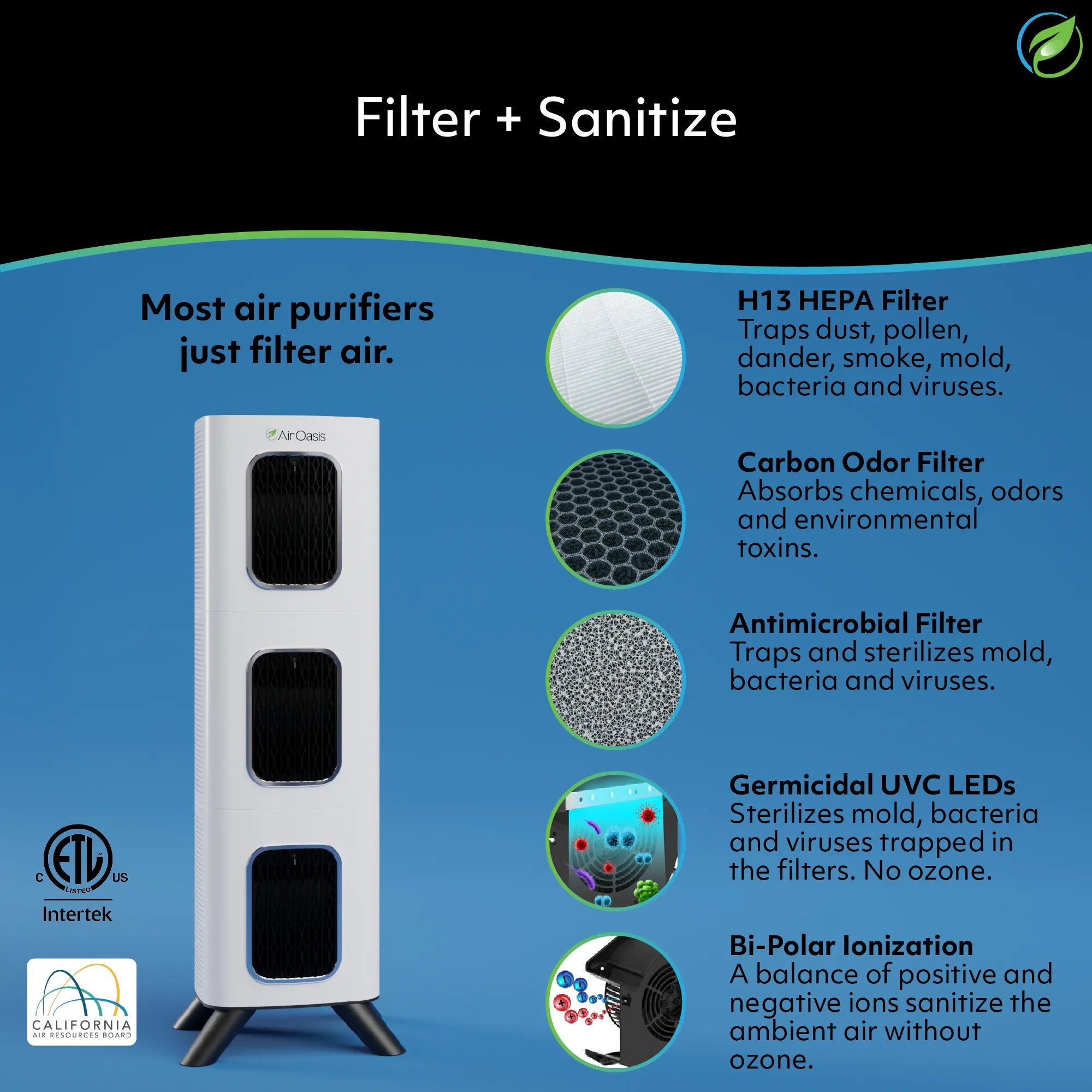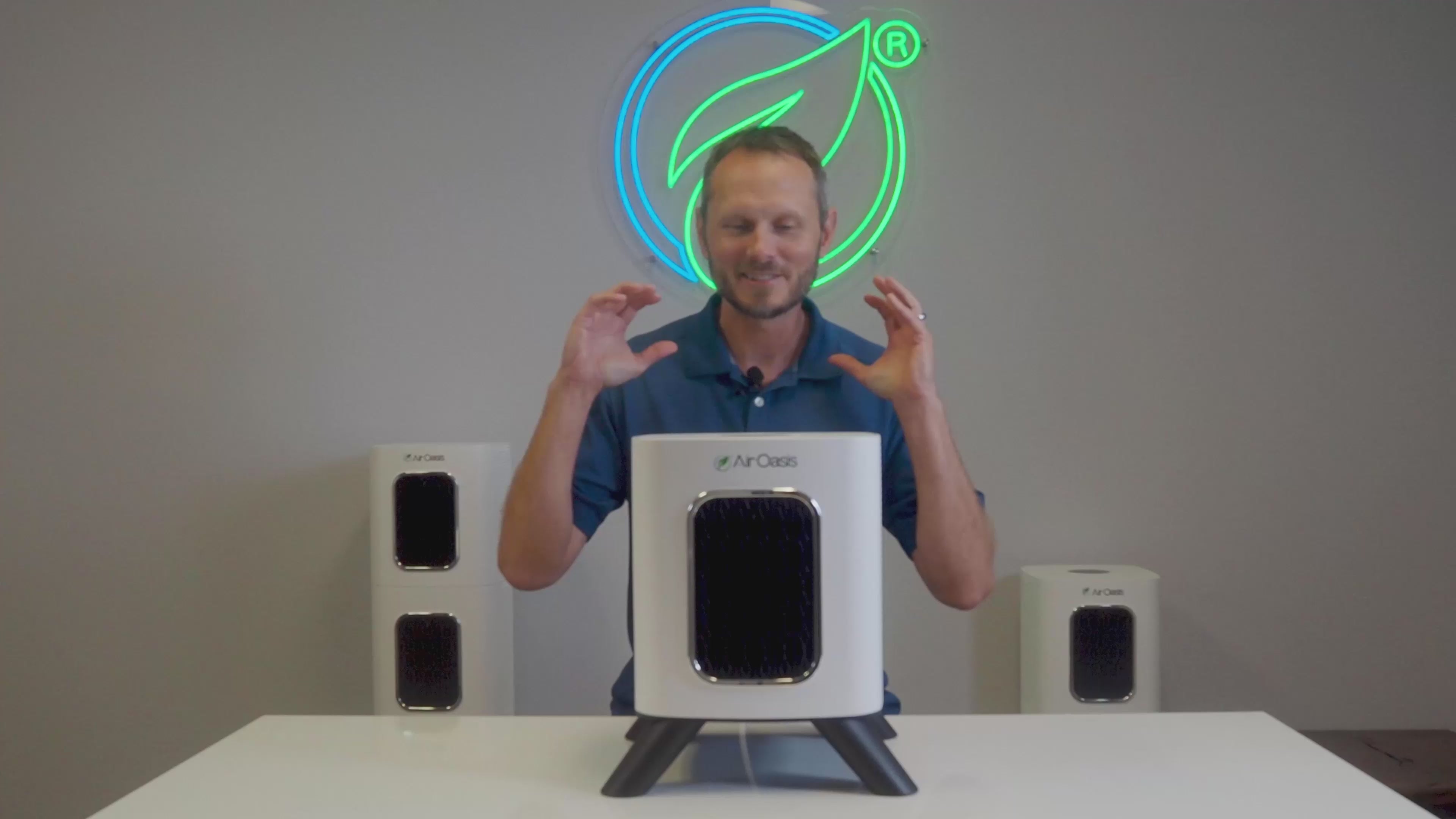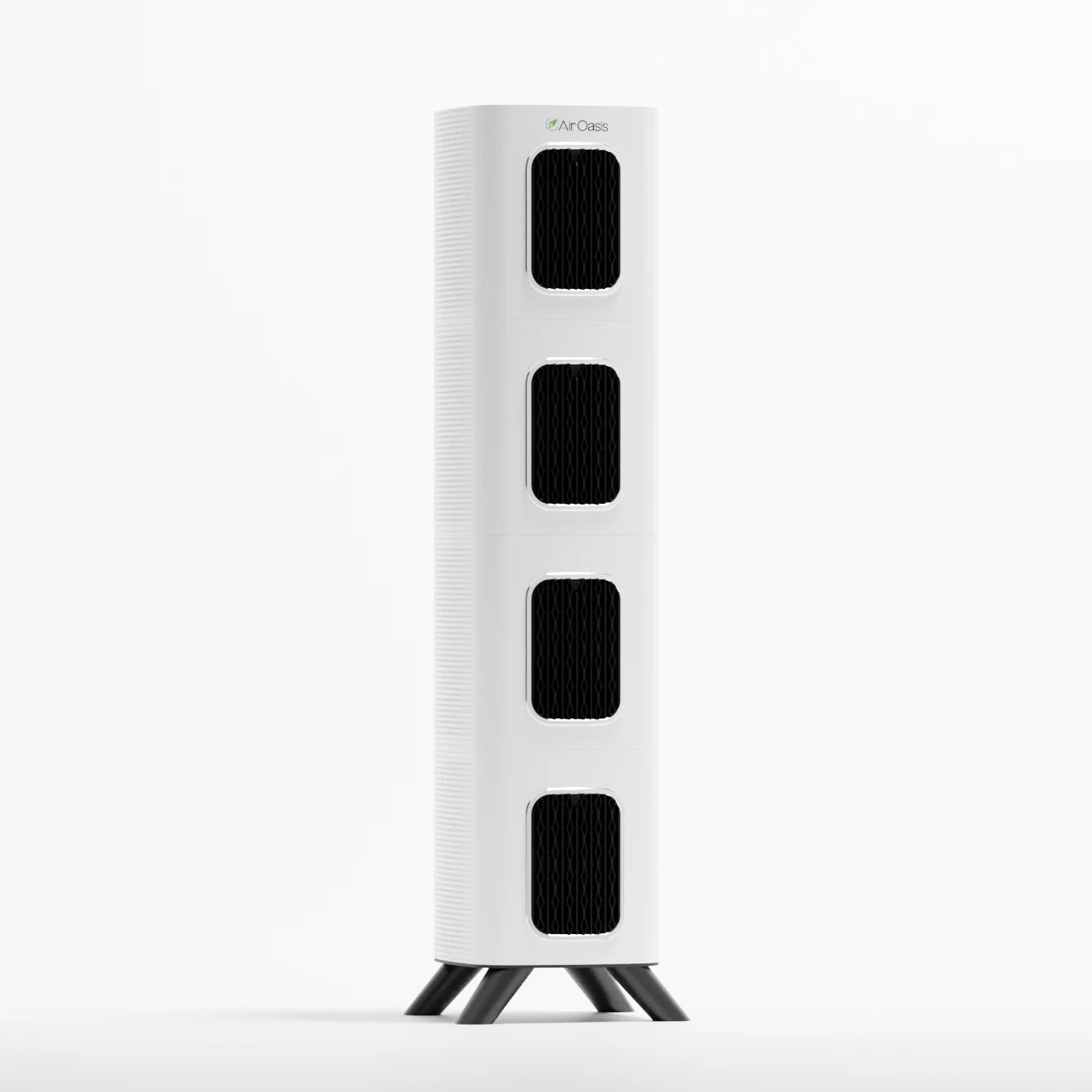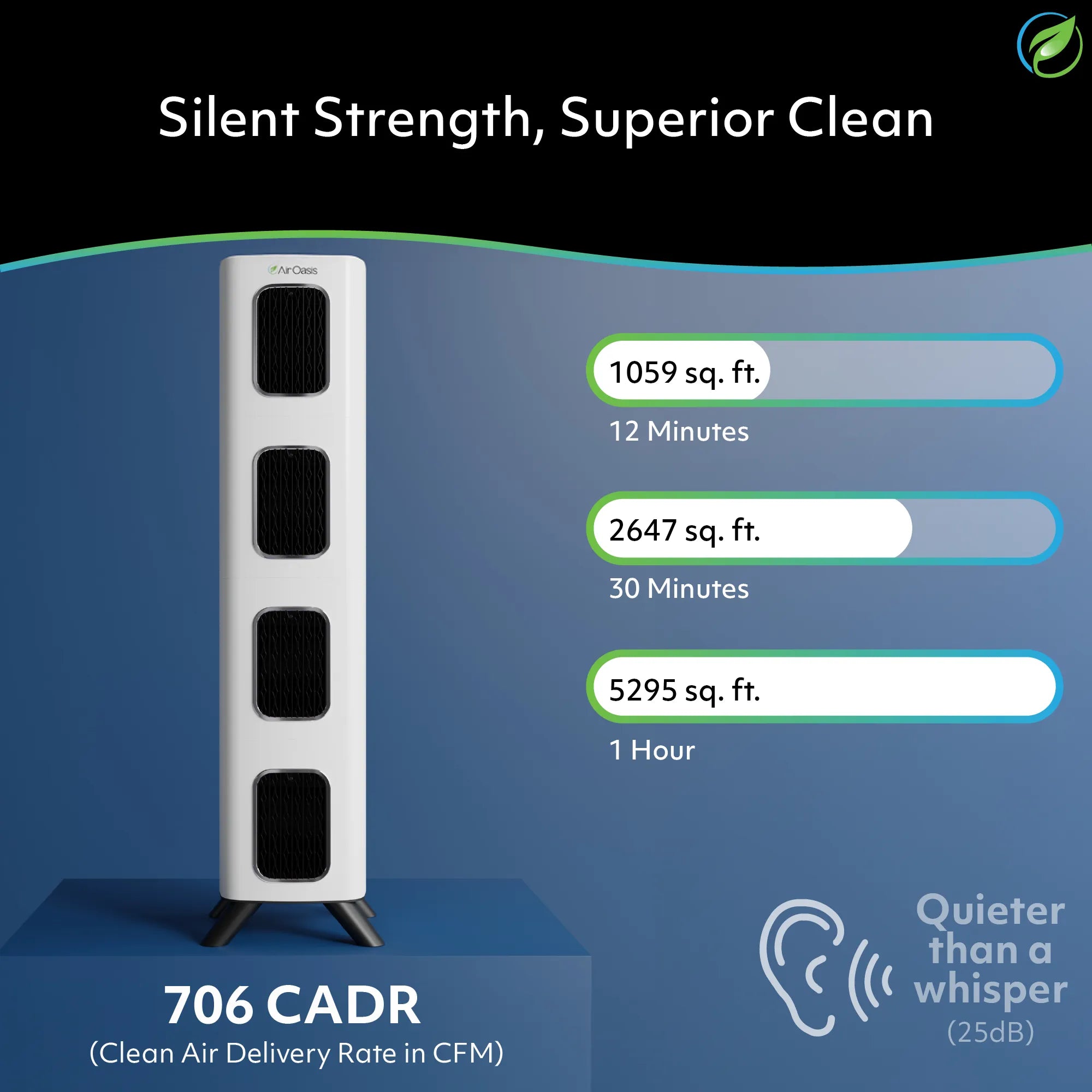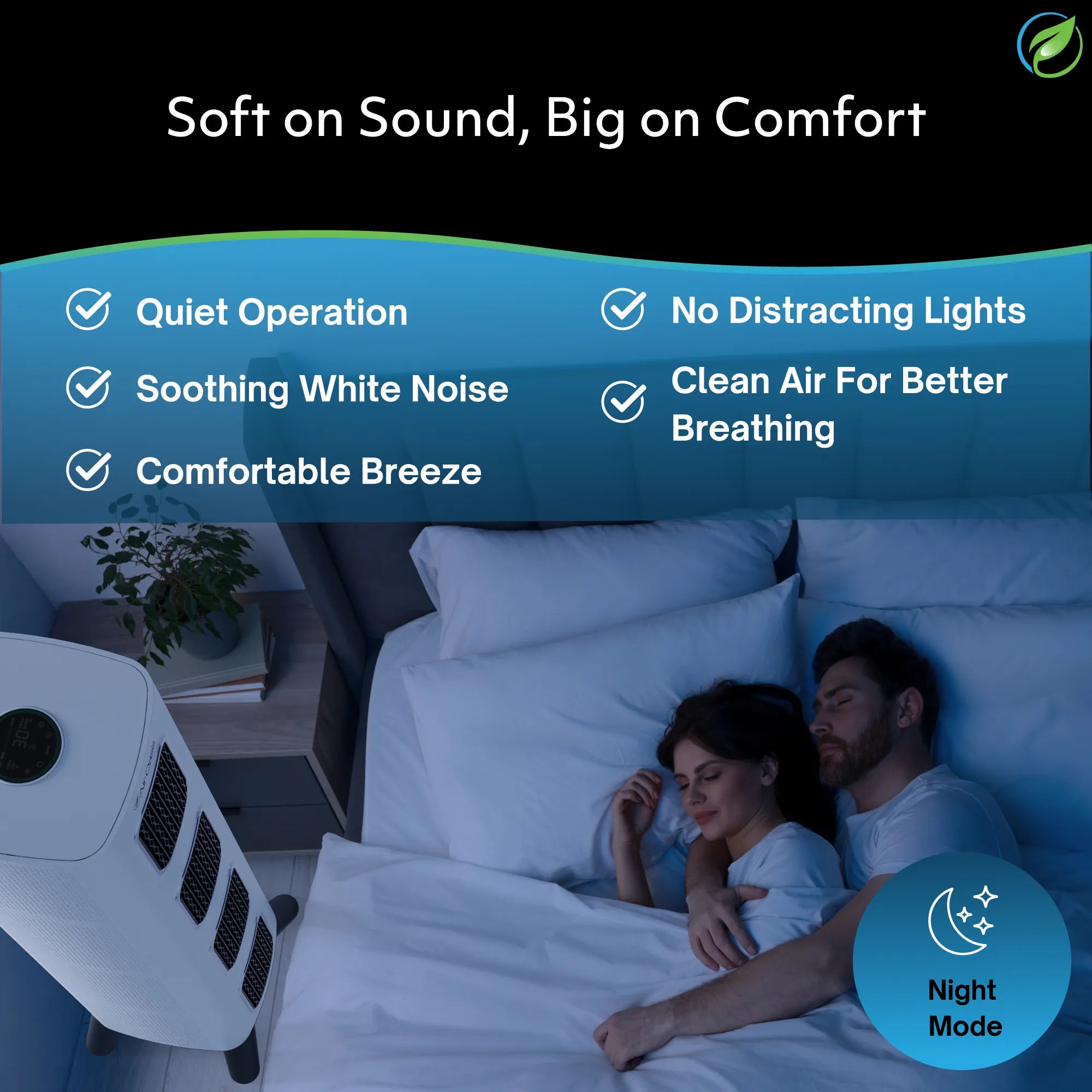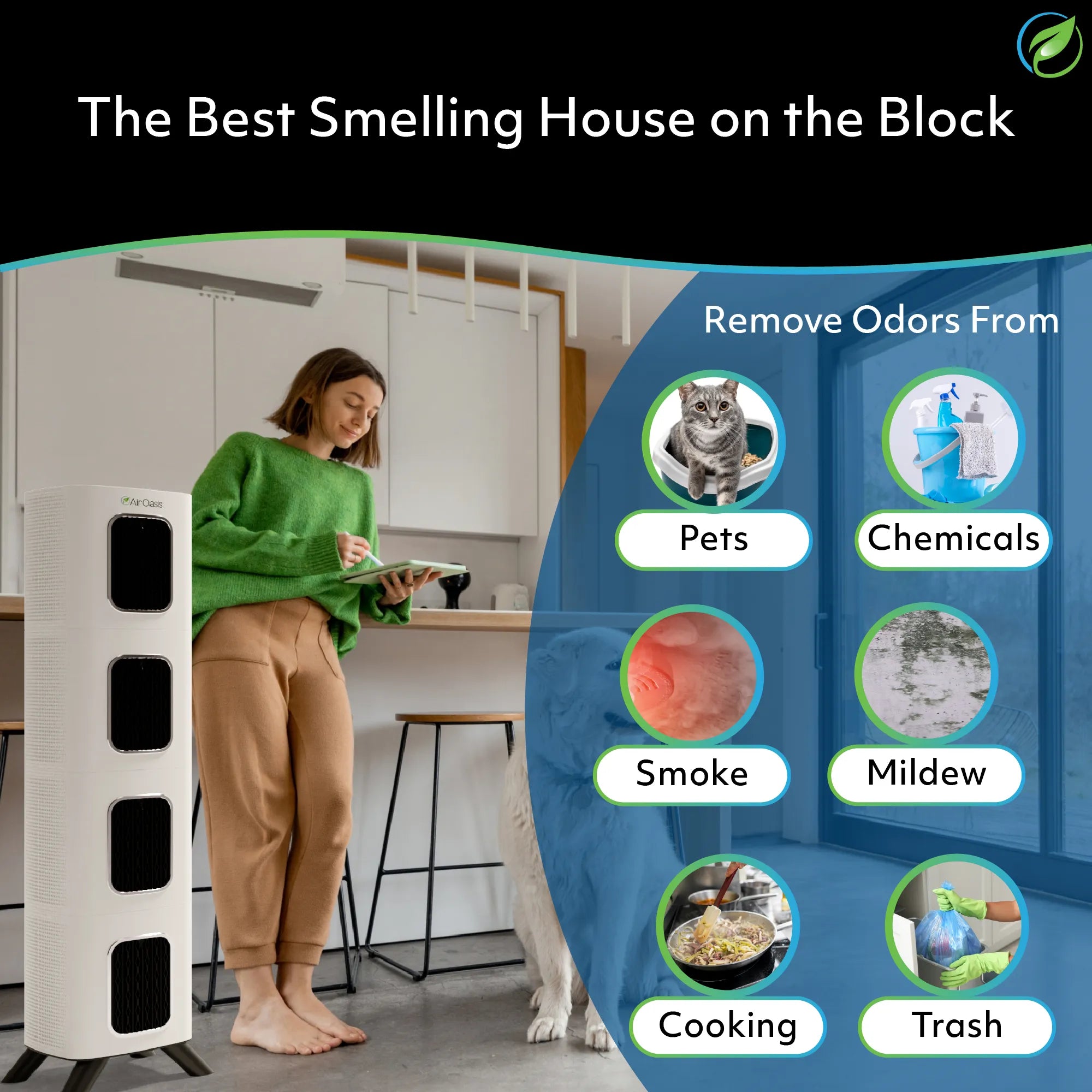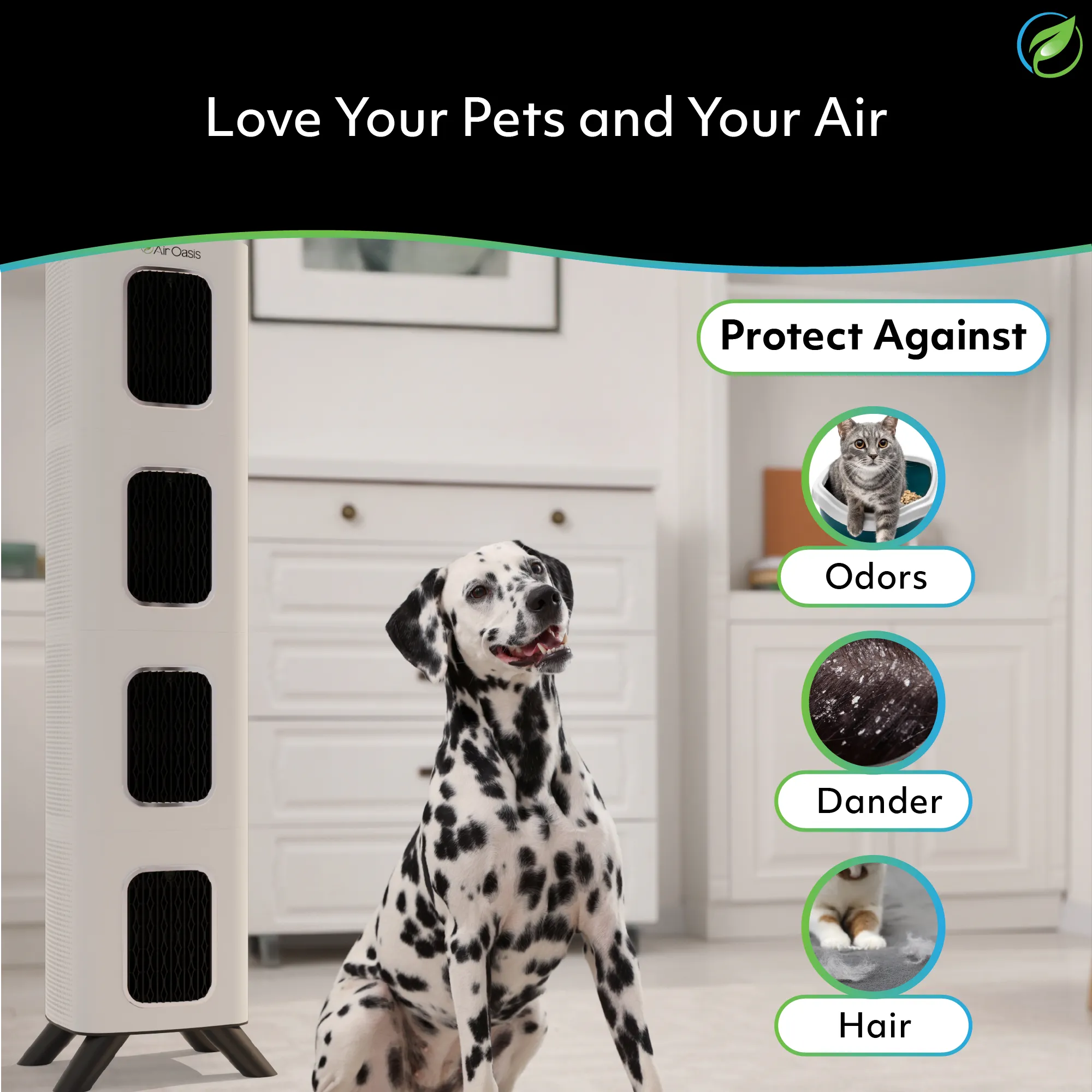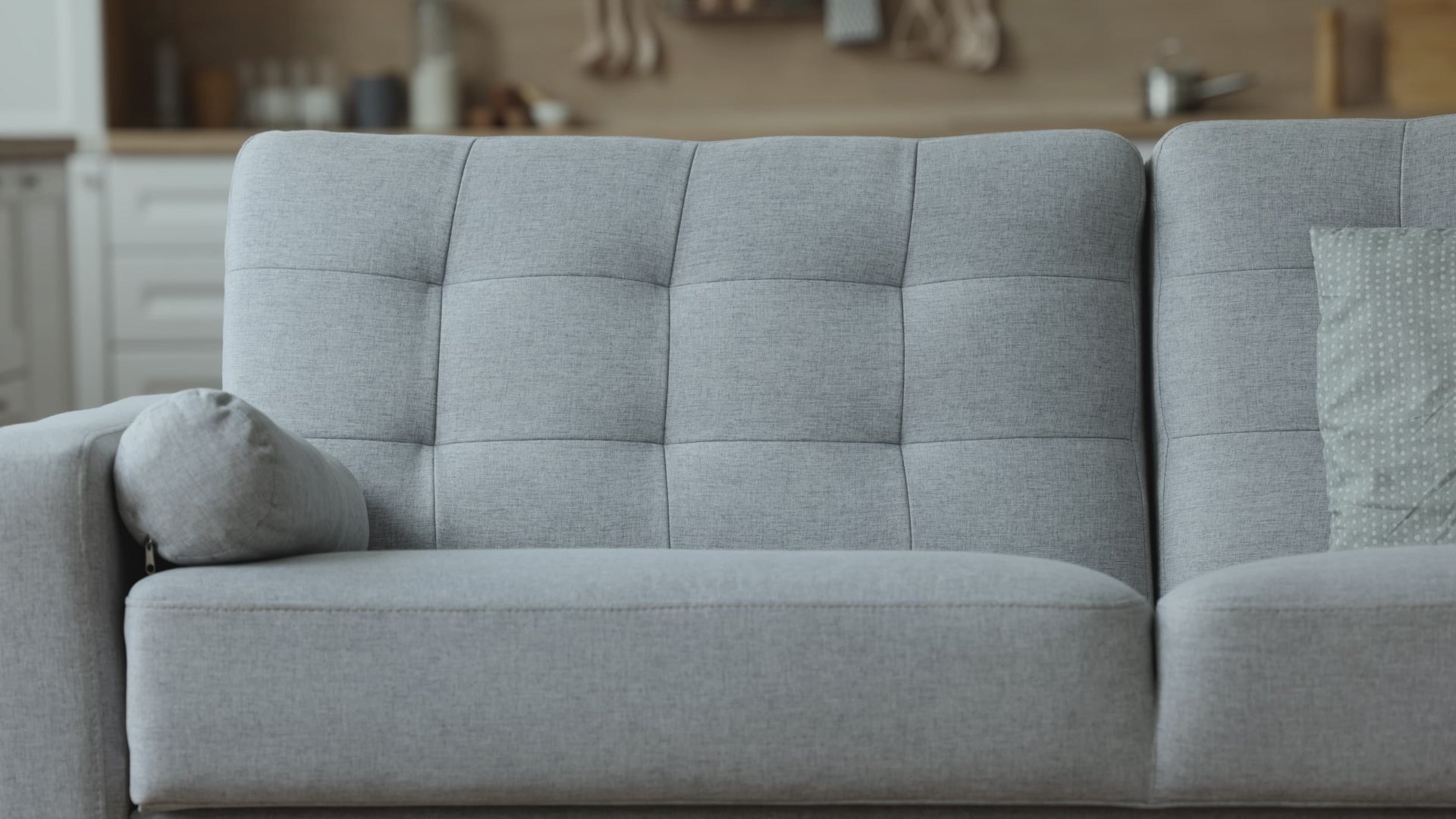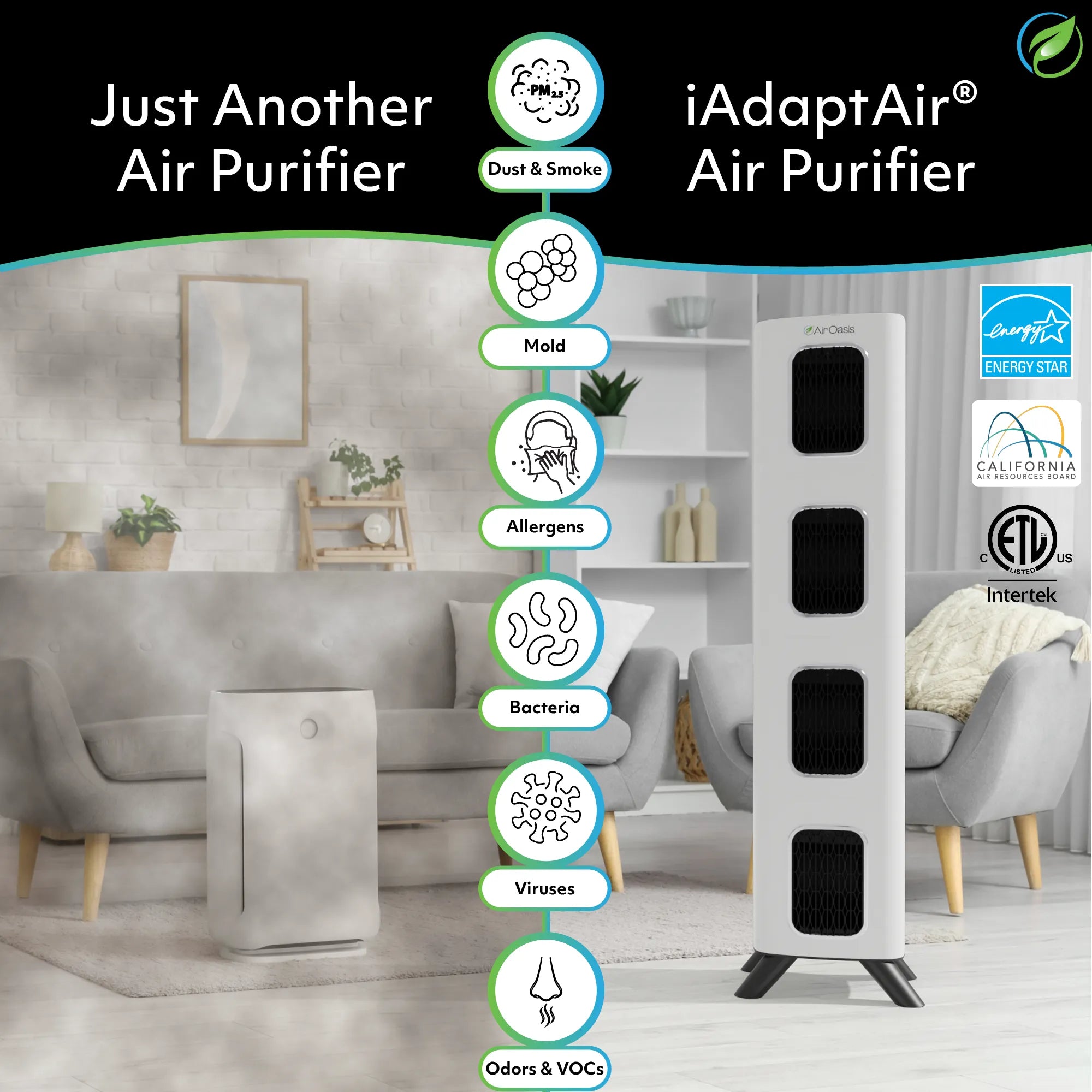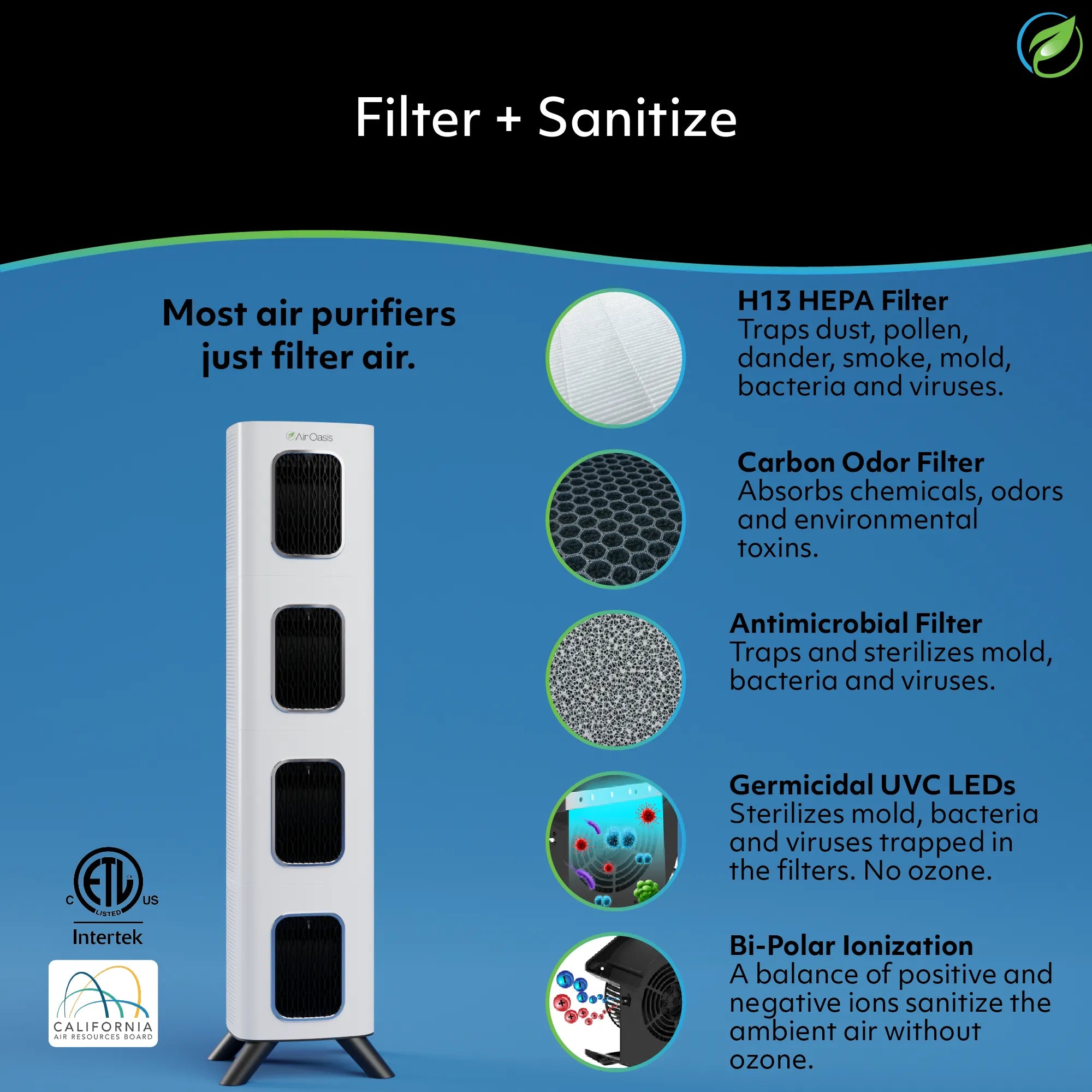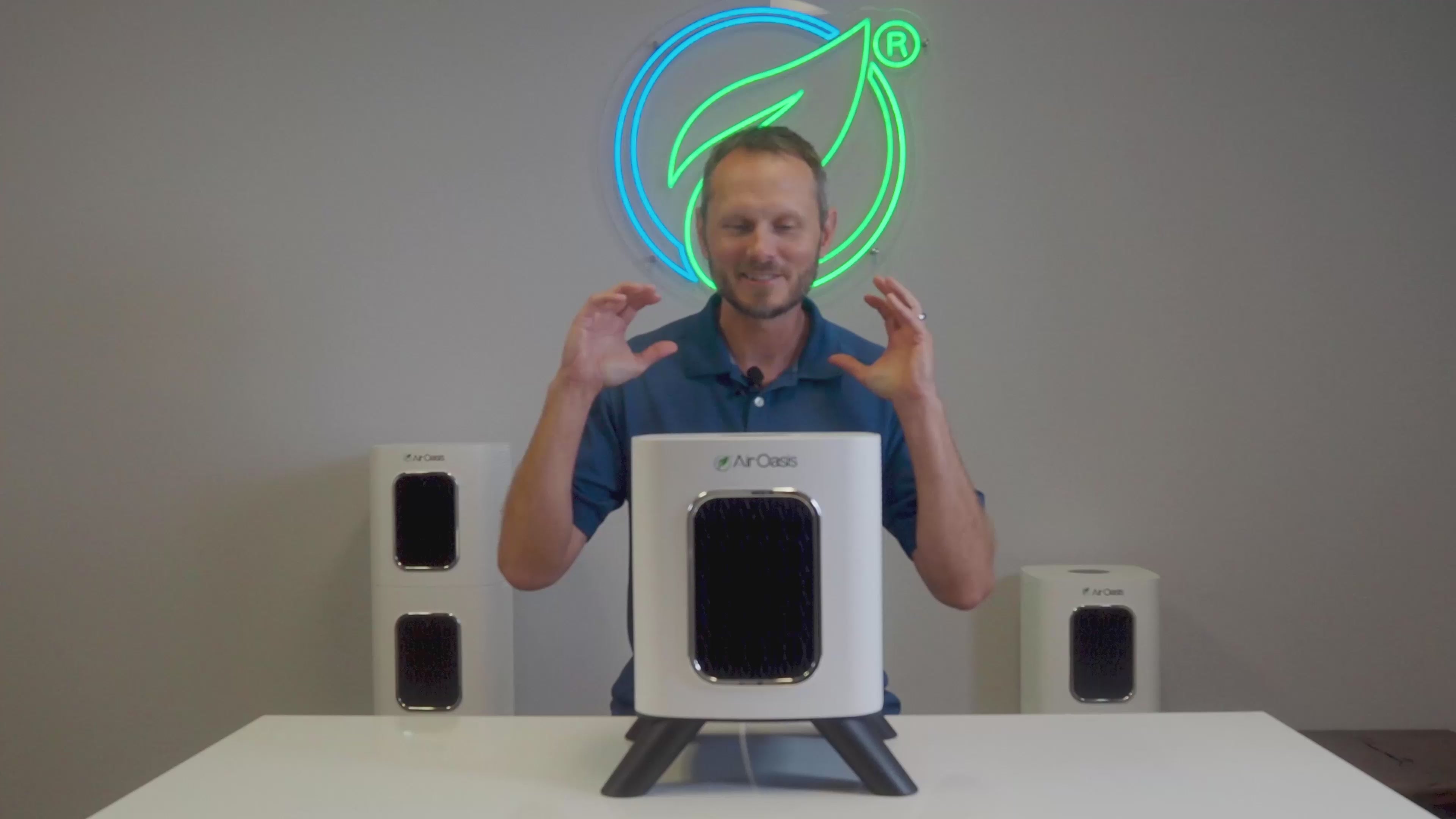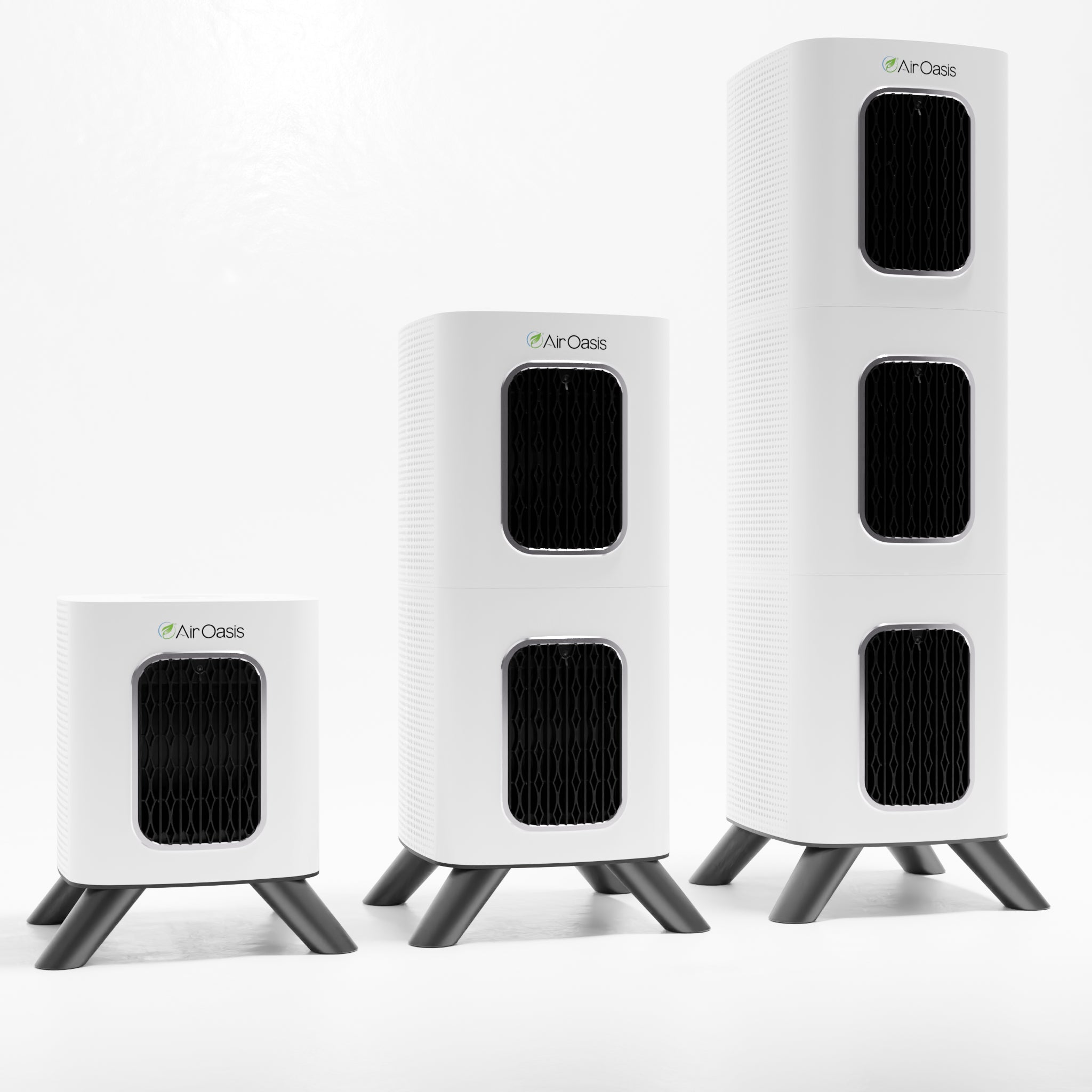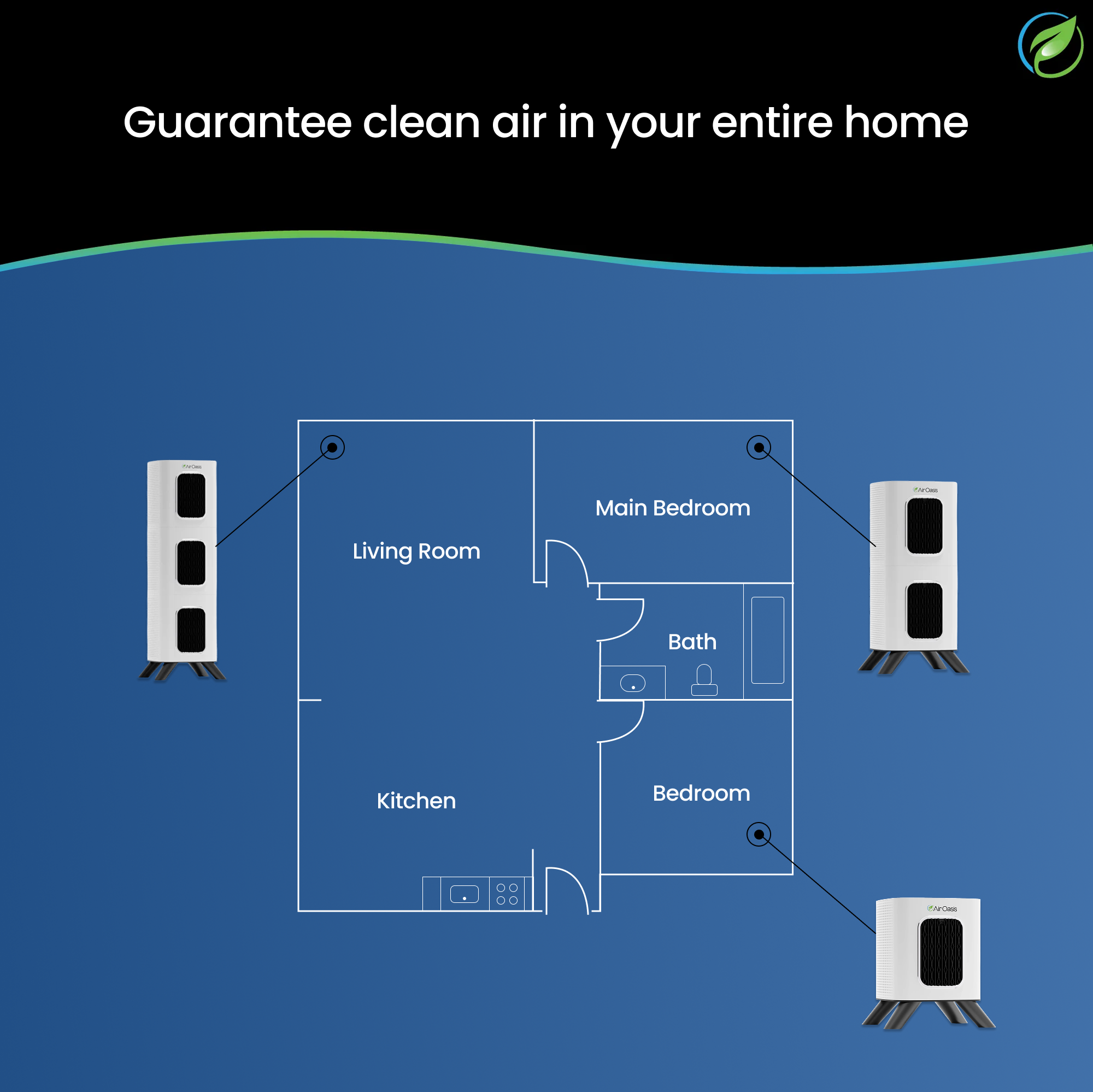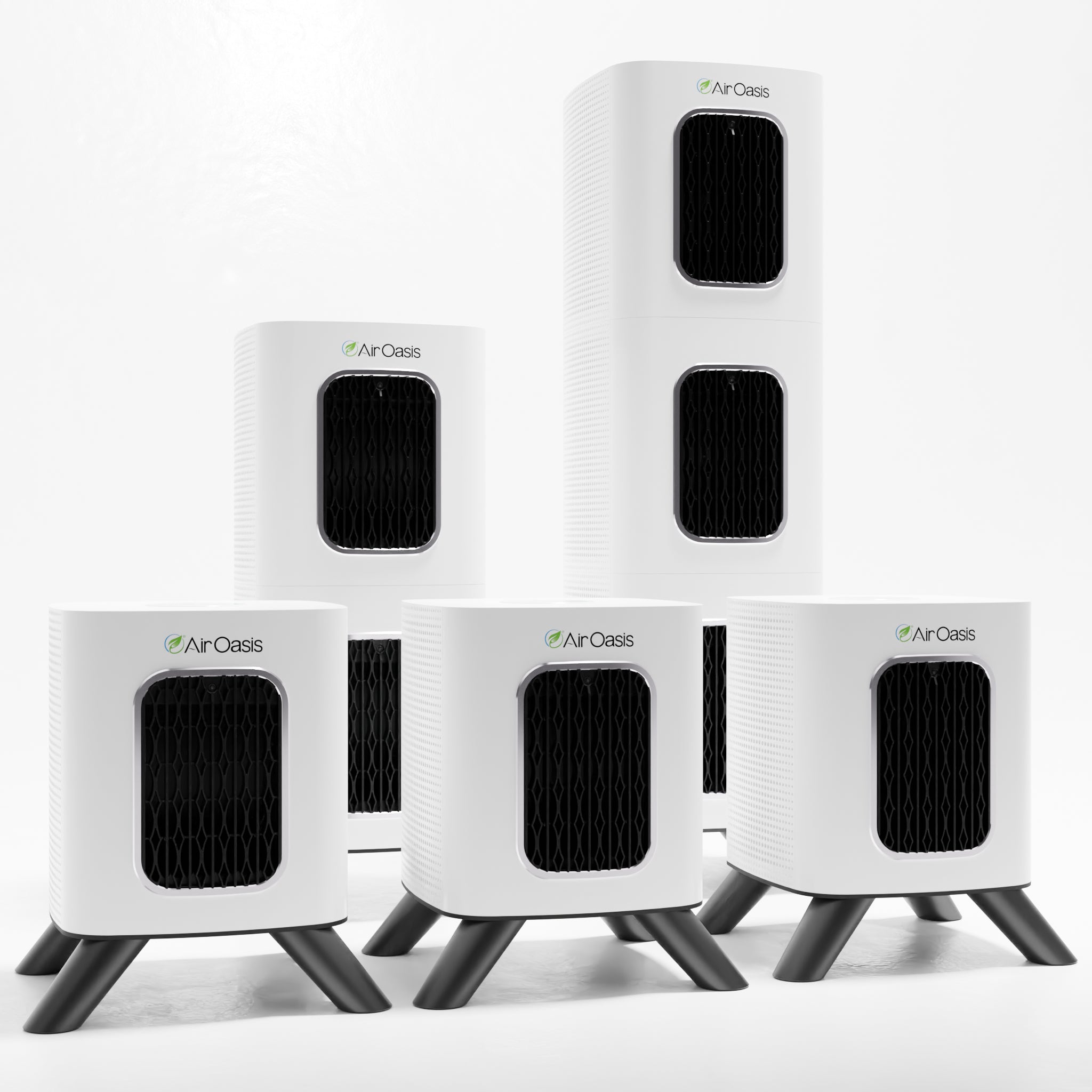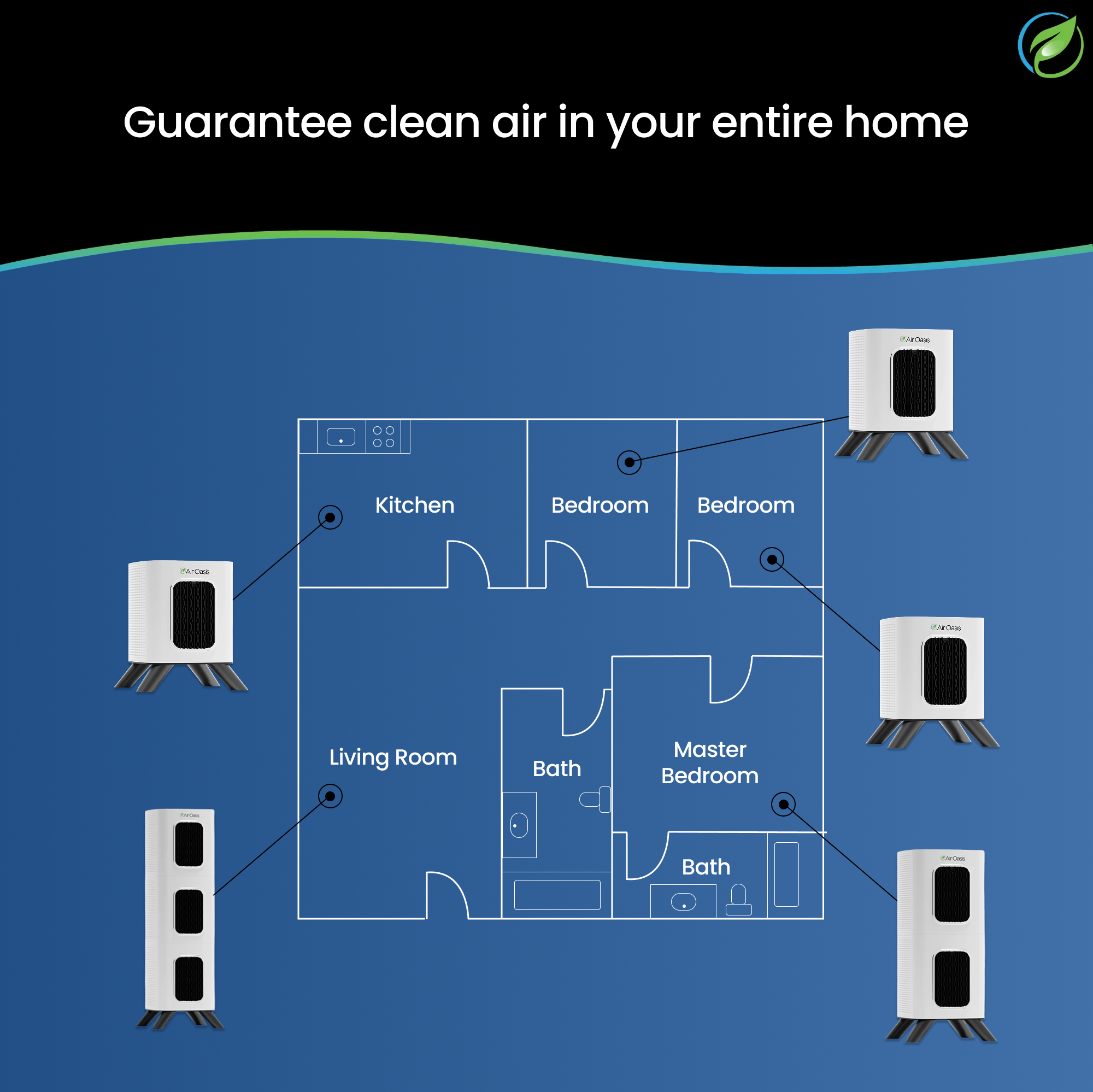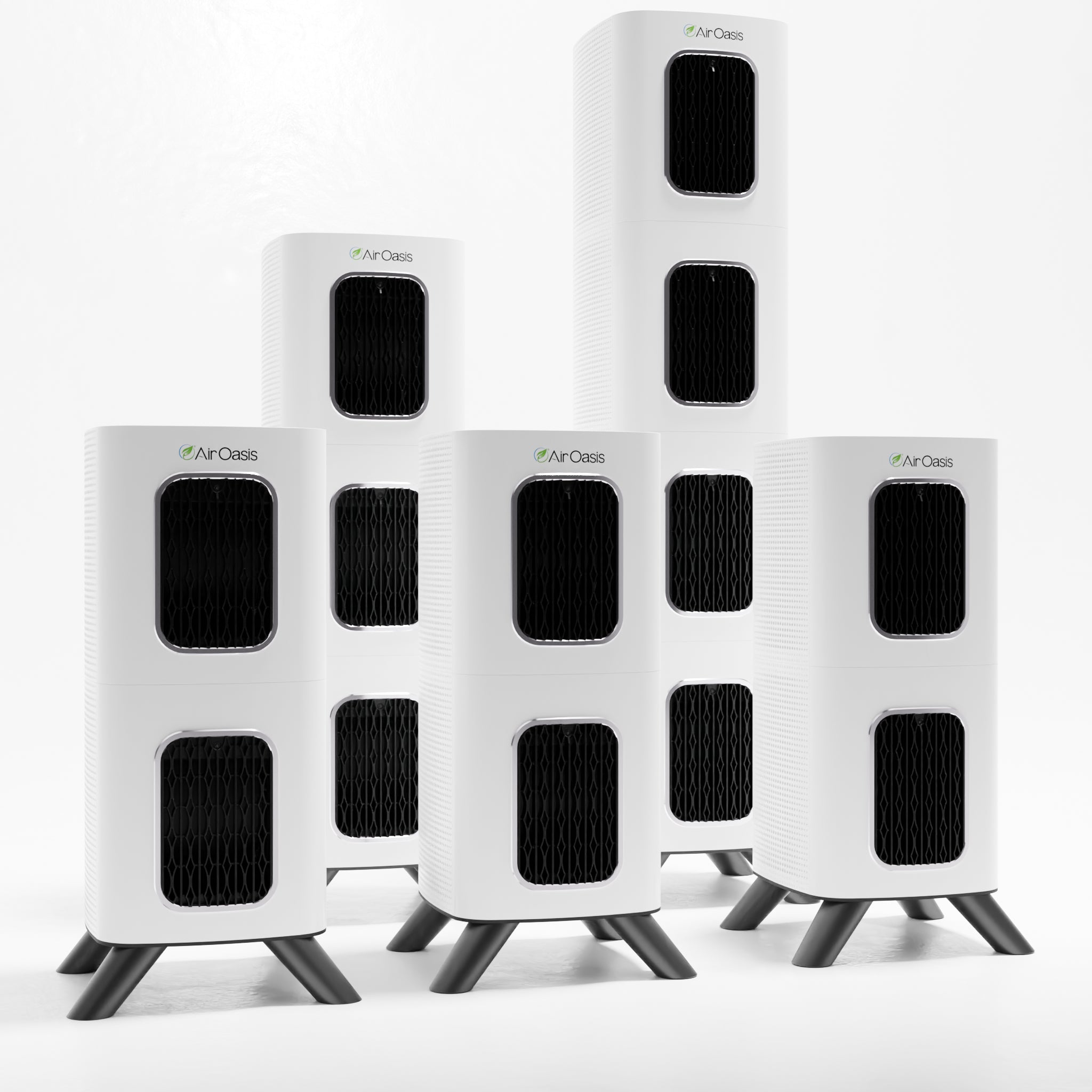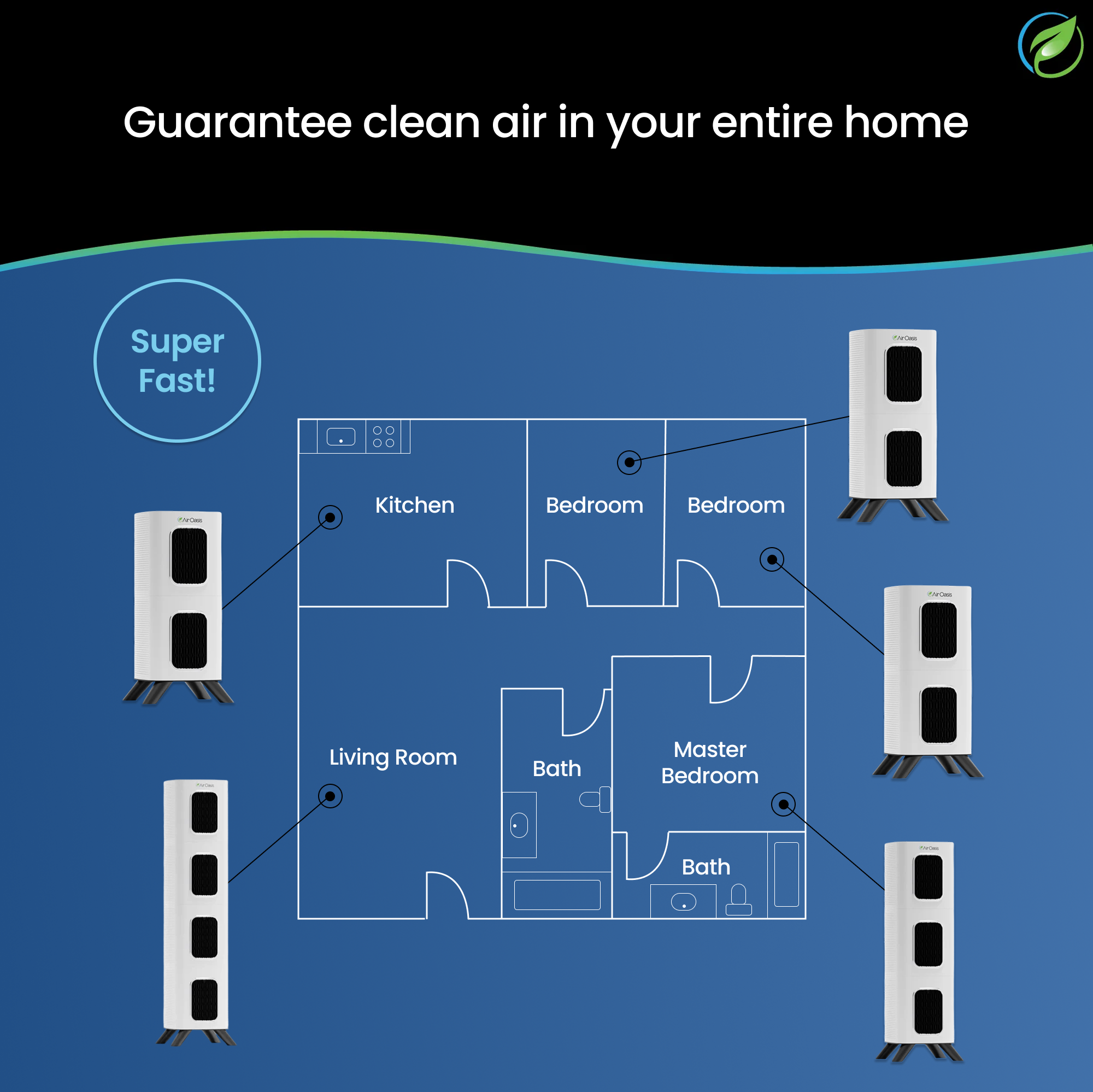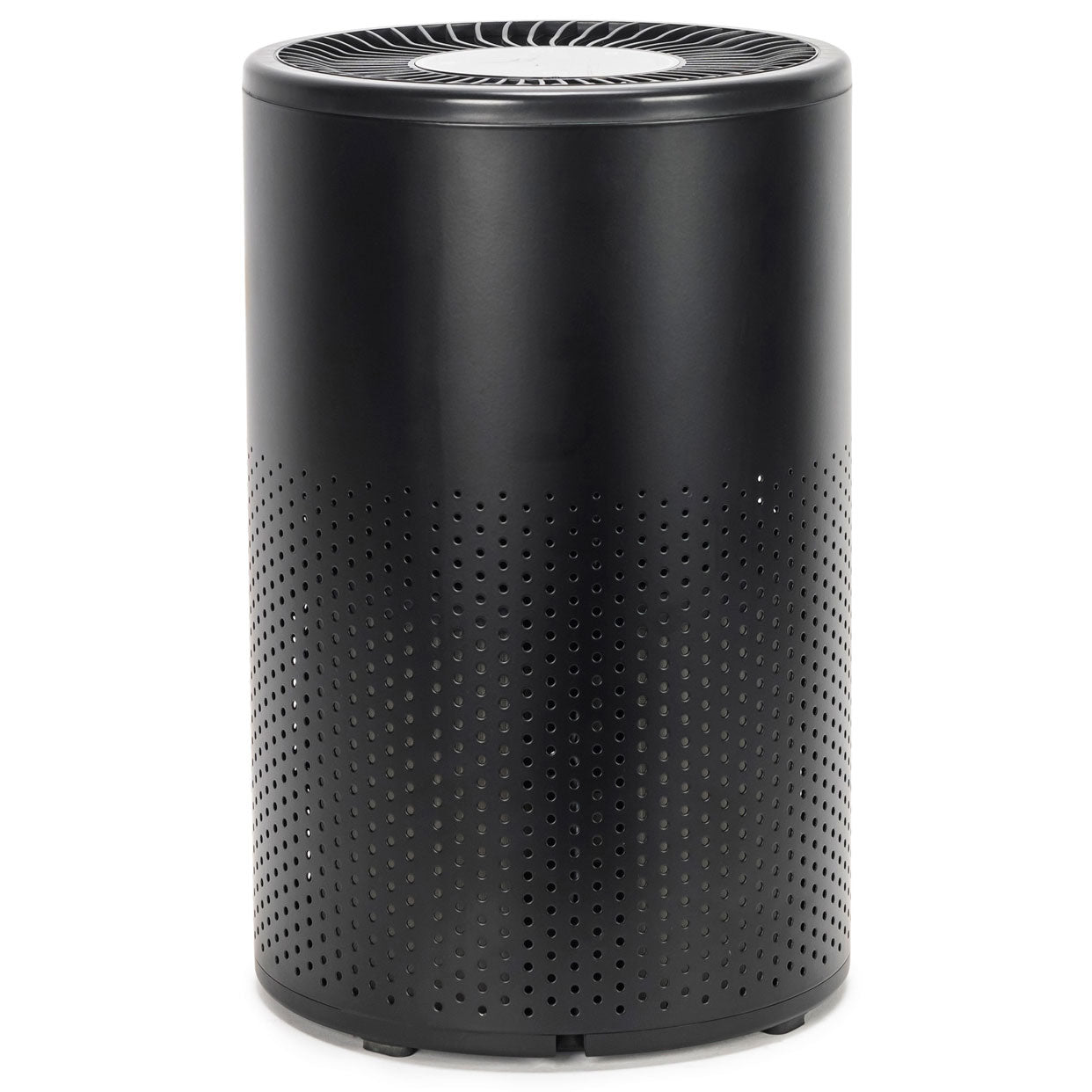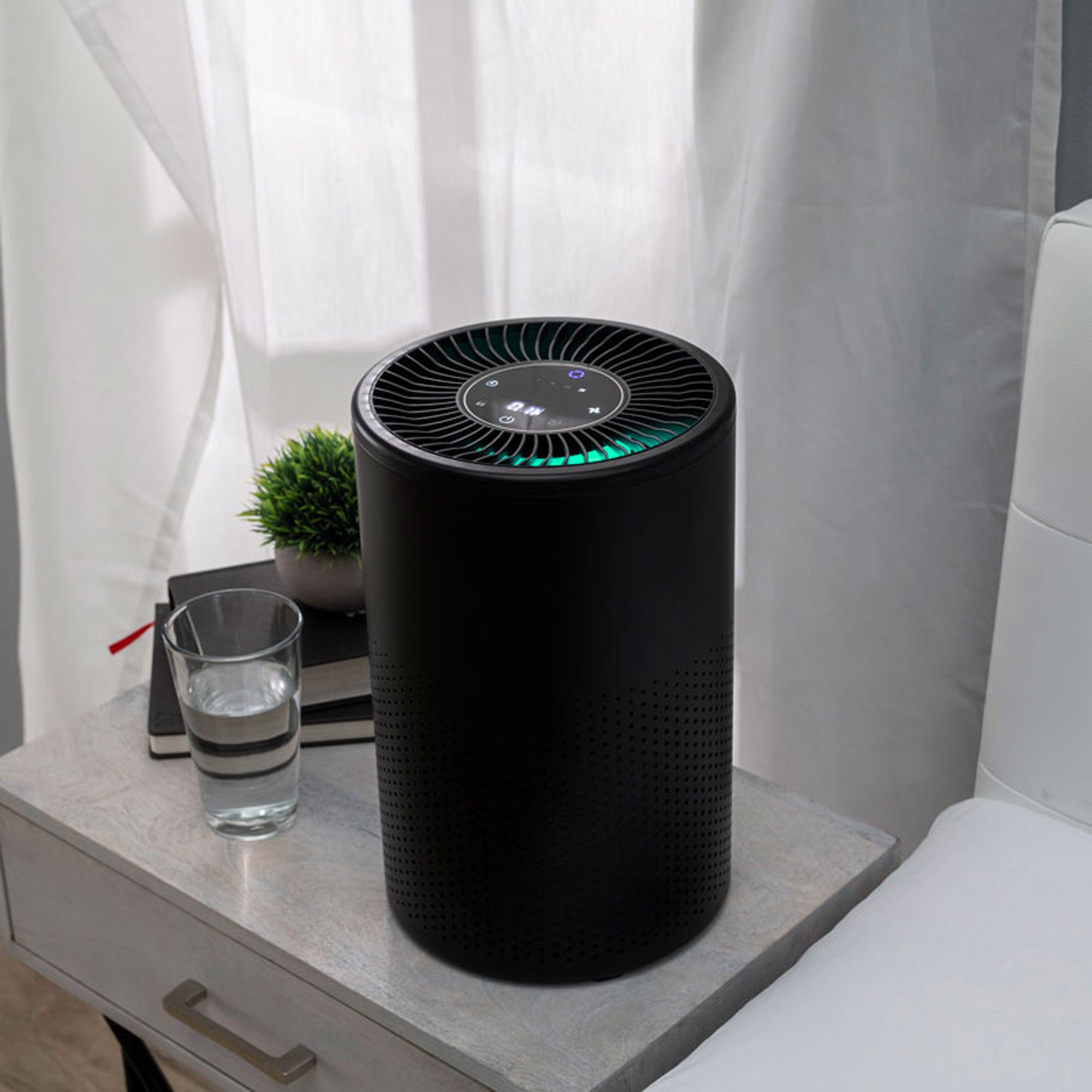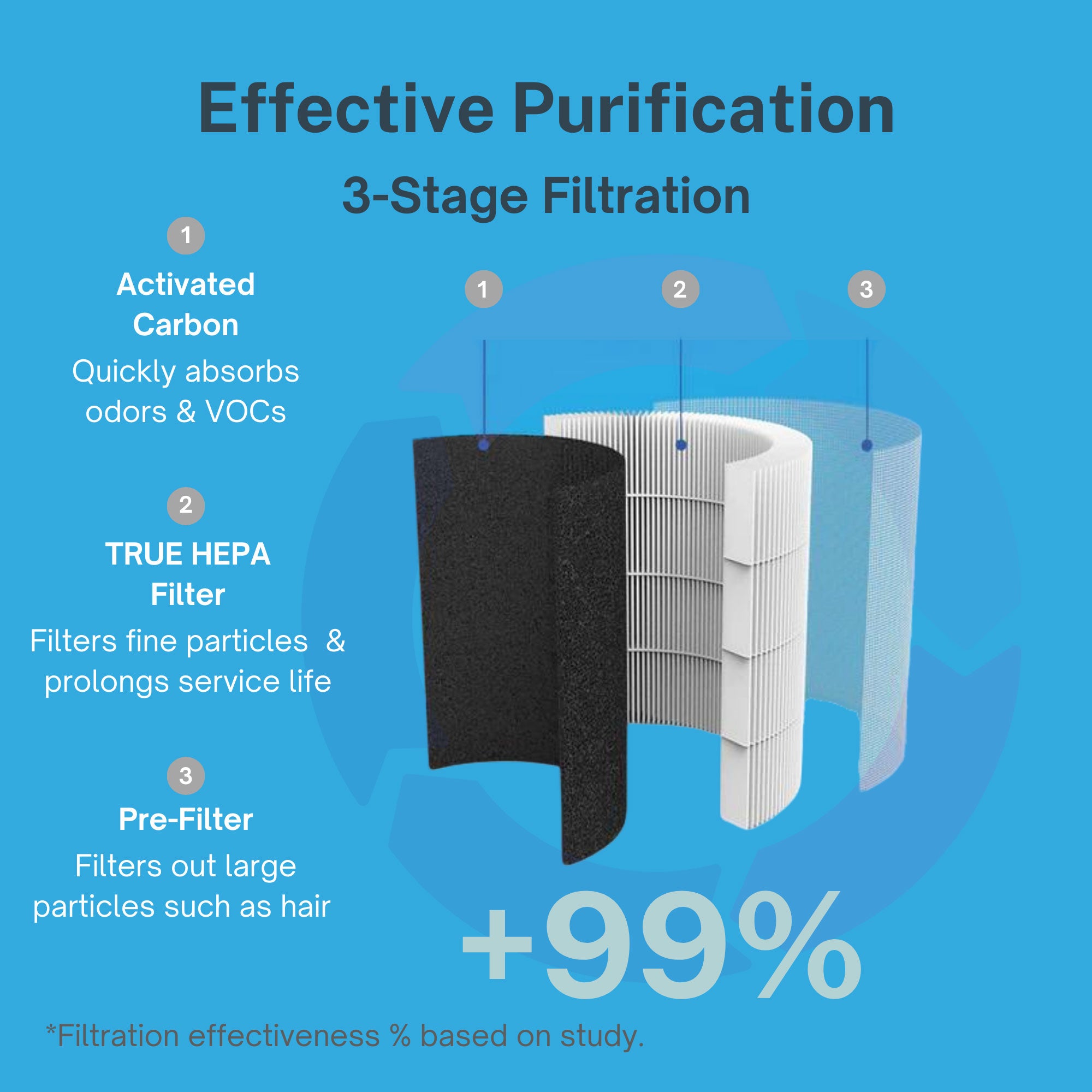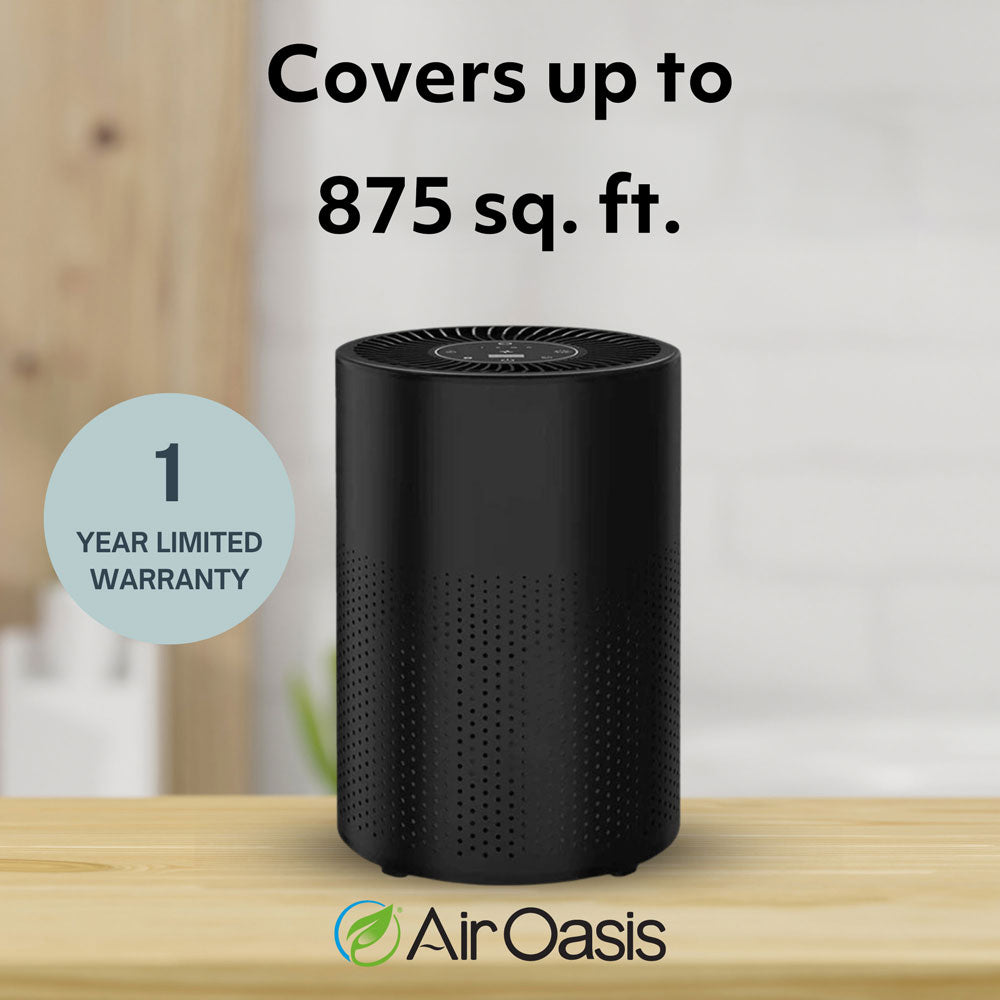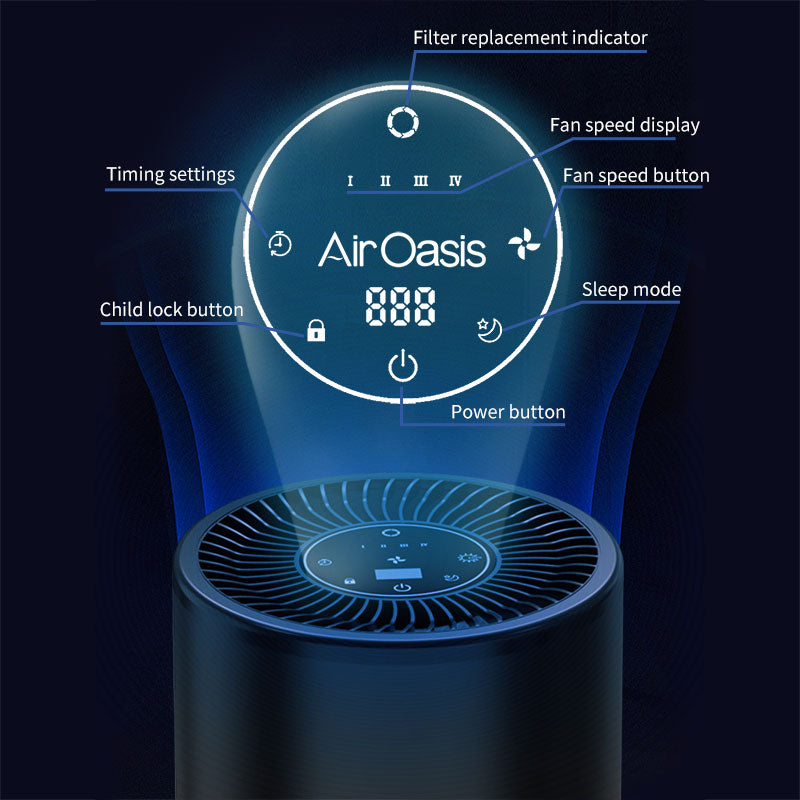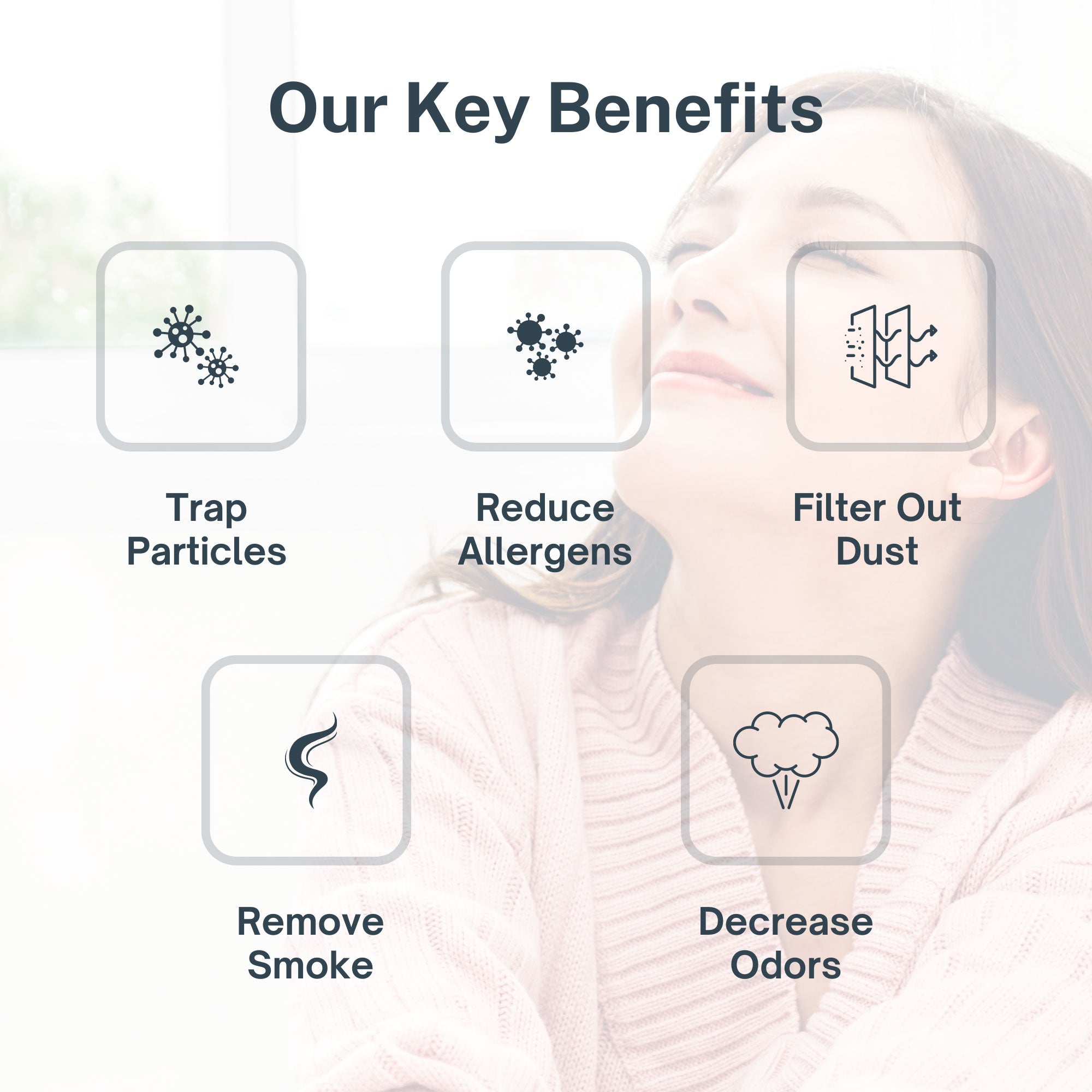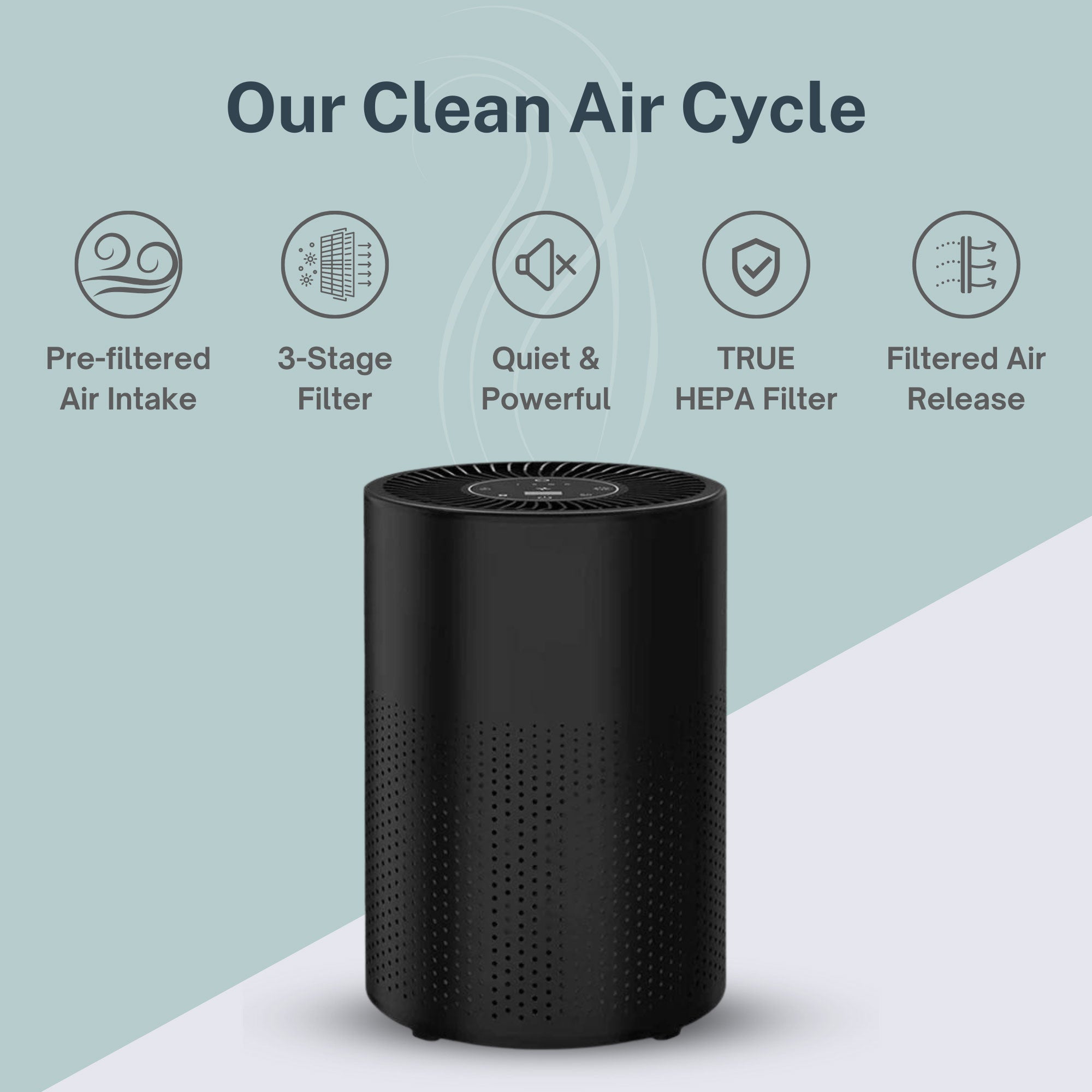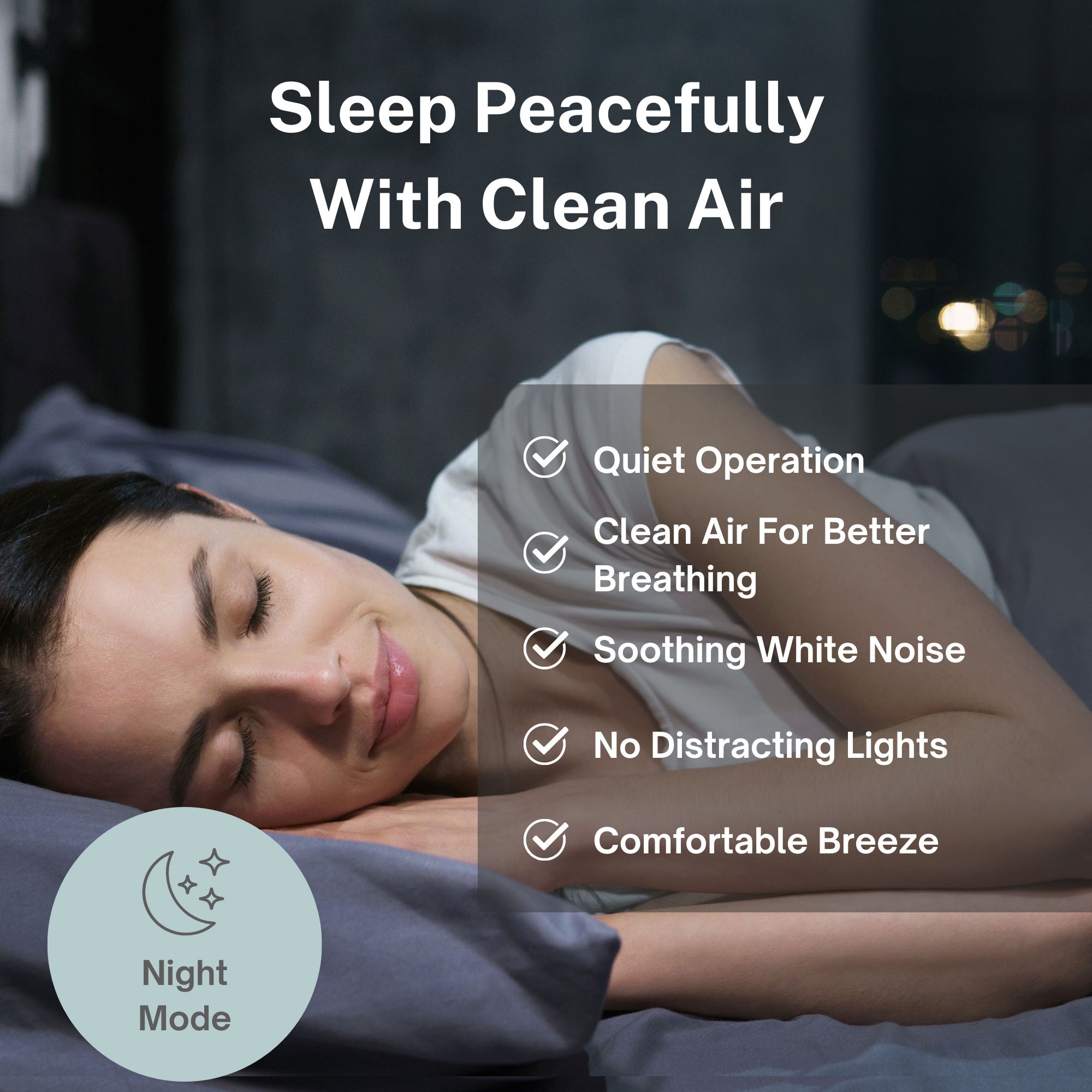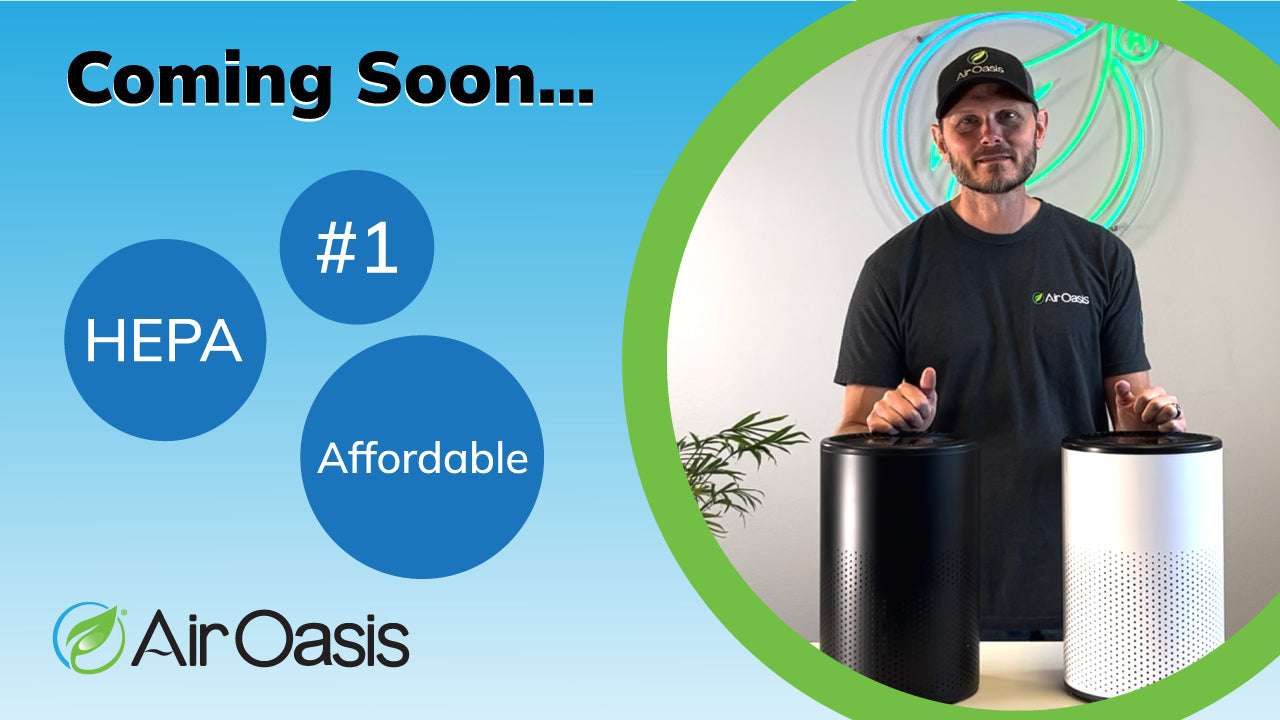Ah, spring. The season of blooming flowers, chirping birds...and itchy eyes, a never-ending stream of sneezes, and a constant battle with a runny nose. Yes, pollen season is upon us, and for allergy sufferers, it can feel like a personal attack from Mother Nature.
But fear not! There's a way to reclaim your spring and breathe easy—with the help of air purifiers, you can keep your indoor air clean and healthy.
Pollen: The Tiny Terror
Before we dive into solutions, let's understand the culprit. Pollen is a fine powder released by plants to reproduce. It floats on the breeze, looking for a mate, and unfortunately, some of it finds its way into our noses and eyes. This triggers our immune system, which goes into overdrive, mistaking the harmless pollen for a dangerous invader. The result? The lovely bouquet of allergy symptoms we all know and dread.
When is Pollen Season?
Pollen season isn't a one-size-fits-all event—it depends on where you live. Here's a breakdown of the usual suspects and their blooming times:
- Tree Trouble (Early Spring): Spring is when trees decide to throw a pollen party. Depending on your location, you might be battling ash, mulberry, sycamore, or willow trees in March and April. The ever-present oak unleashes its pollen payload a little later, from March to April. In the South, cedar fever season is a whole other beast, with mountain cedar trees releasing pollen from December to February.
- Grass Gremlins (Summer): Just as you think you've caught your breath, summer rolls in with a fresh wave of allergens. This time, it's the grasses taking center stage. The exact culprits vary by region, but common offenders include Bermuda grass, crabgrass, and ryegrass. Grasses tend to peak in pollen production from June to mid-September, so keep an eye on the forecast!
- Weed Woes (Fall): As summer fades, weeds take their final bow for the season. These botanical bad guys can cause significant problems for allergy sufferers, with ragweed being a notorious villain. Ragweed season typically peaks in September and October, so stock up on tissues and consider keeping your windows closed during high pollen days. In some areas, you might also encounter pigweed or marsh elder, which can add to your allergy woes in late summer and fall.
Know Your Local Pollen Profile
Remember, this is just a general overview. The exact timing and type of pollen in your area can vary. Here are some tips to become a pollen pro in your own neighborhood:
- Check the weather forecast: Most weather reports now include pollen counts. This is a valuable tool to plan your outdoor activities and know when to take extra precautions.
- Download a pollen app: There are several apps available that track pollen levels in your specific location.
- Talk to your allergist: They can help you identify your specific pollen triggers and create a personalized allergy management plan.
By being pollen-aware, you can take control of your allergy symptoms and enjoy the changing seasons without feeling miserable.
What are Pollen Allergy Symptoms?
If you suffer from pollen allergies, you know the struggle is real. It's not just a minor annoyance—it's a full-blown assault on your senses that can make even the simplest tasks feel like an uphill battle. Here's a breakdown of the common pollen allergy symptoms:
- Runny Nose: This is a hallmark symptom of pollen allergies. Your nose feels congested and irritated, producing a clear, watery discharge that can be constant and bothersome. Blowing your nose offers only temporary relief, leaving you constantly reaching for tissues.
- Itchy Eyes: This is another classic symptom that can be incredibly frustrating. Your eyes feel itchy, watery, and red like they've been exposed to an irritant. Resisting the urge to rub them is a constant battle, but rubbing can actually worsen the irritation.
- Sneezing: Pollen allergies can trigger sudden and explosive sneezing fits that can catch you by surprise. One minute you're fine, the next you're letting out a powerful sneeze that leaves you slightly dazed and with a sore throat.
- Postnasal Drip: This is a constant trickle of mucus down the back of your throat, causing a cough, a sore throat, and a feeling of congestion. It can be incredibly bothersome and disrupt your sleep.
- Fatigue: As if the constant sniffling, sneezing, and itchy eyes weren't enough, pollen allergies can also zap your energy levels. You might feel tired and sluggish, making it difficult to concentrate or enjoy your daily activities.
For people with asthma, pollen season can be even more challenging. Pollen can irritate the airways, triggering asthma symptoms like wheezing, coughing, and shortness of breath. This can make breathing difficult and significantly impact one's quality of life.
If you have asthma and allergies, it's crucial to work with your doctor to develop a management plan. This might include medication, allergy shots, and lifestyle changes to minimize your exposure to pollen.
Your Indoor Sanctuary: Fighting Back with Air Purifiers
Here's where Air Oasis air purifiers come in. These purifiers use medical-grade H13 HEPA filters, the gold standard in air filtration. HEPA stands for High-Efficiency Particulate Air, and these filters are like tiny sieves that trap pollen particles as small as 0.05 microns (that's incredibly small—allergy-inducing pollen is generally at least 25 microns, so it's no match for HEPA filtration). Essentially, they act as a shield, protecting you from invisible pollen invaders.
But Air Oasis goes beyond basic filtration. The iAdaptAir line of air purifiers offers additional features to enhance your indoor air quality. Activated carbon filters can tackle unpleasant odors from cooking or pets, while UV-C light technology neutralizes airborne germs and viruses. Bi-polar ionization and silver ions add two more layers of protection from airborne particles.
What else sets Air Oasis purifiers apart? They're built to last, with durable construction and quiet operation. Plus, they come in a variety of sizes, from small to pro, to suit different room sizes and needs.
Banish Pollen with Air Oasis
Don't let pollen dictate your life. Air Oasis air purifiers can help you create a clean air sanctuary in your home, allowing you to breathe easier and enjoy the season without the allergy blues.
Take back control of your comfort and well-being. Shop Air Oasis air purifiers to find the best fit for your home.


